by Shojinmeat Project
The presentation and slides were originally produced by IntegriCulture Inc for New Harvest 2020. English subtitles were added to the video and published under a permission from IntegriCulture Inc. A full transcript of the presentation is below.
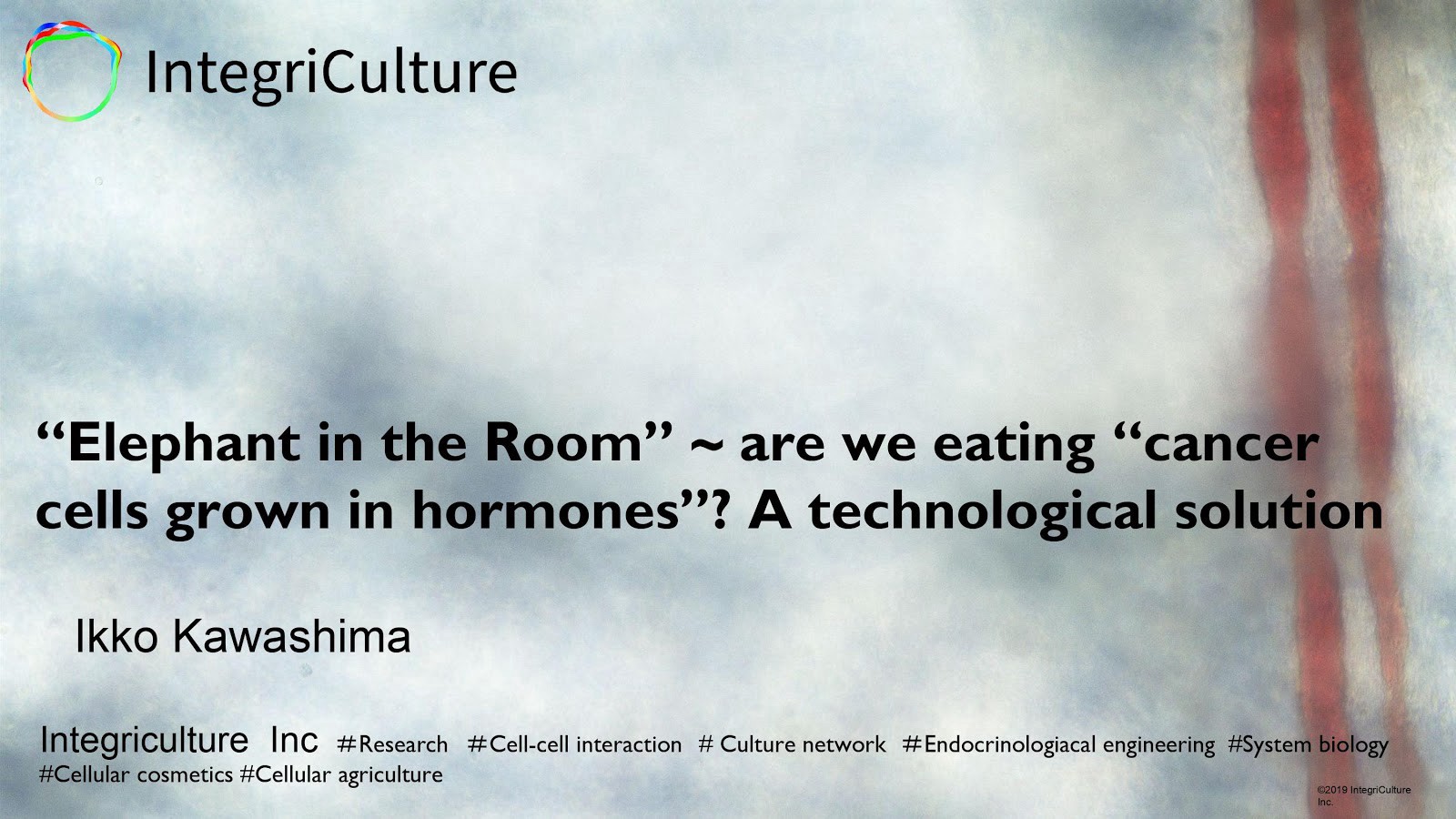
I’m Ikko Kawashima, CTO of IntegriCulture Inc. The slides were originally prepared for New Harvest 2020. Since the event is cancelled, I am putting the whole presentation online in video and talk script format.
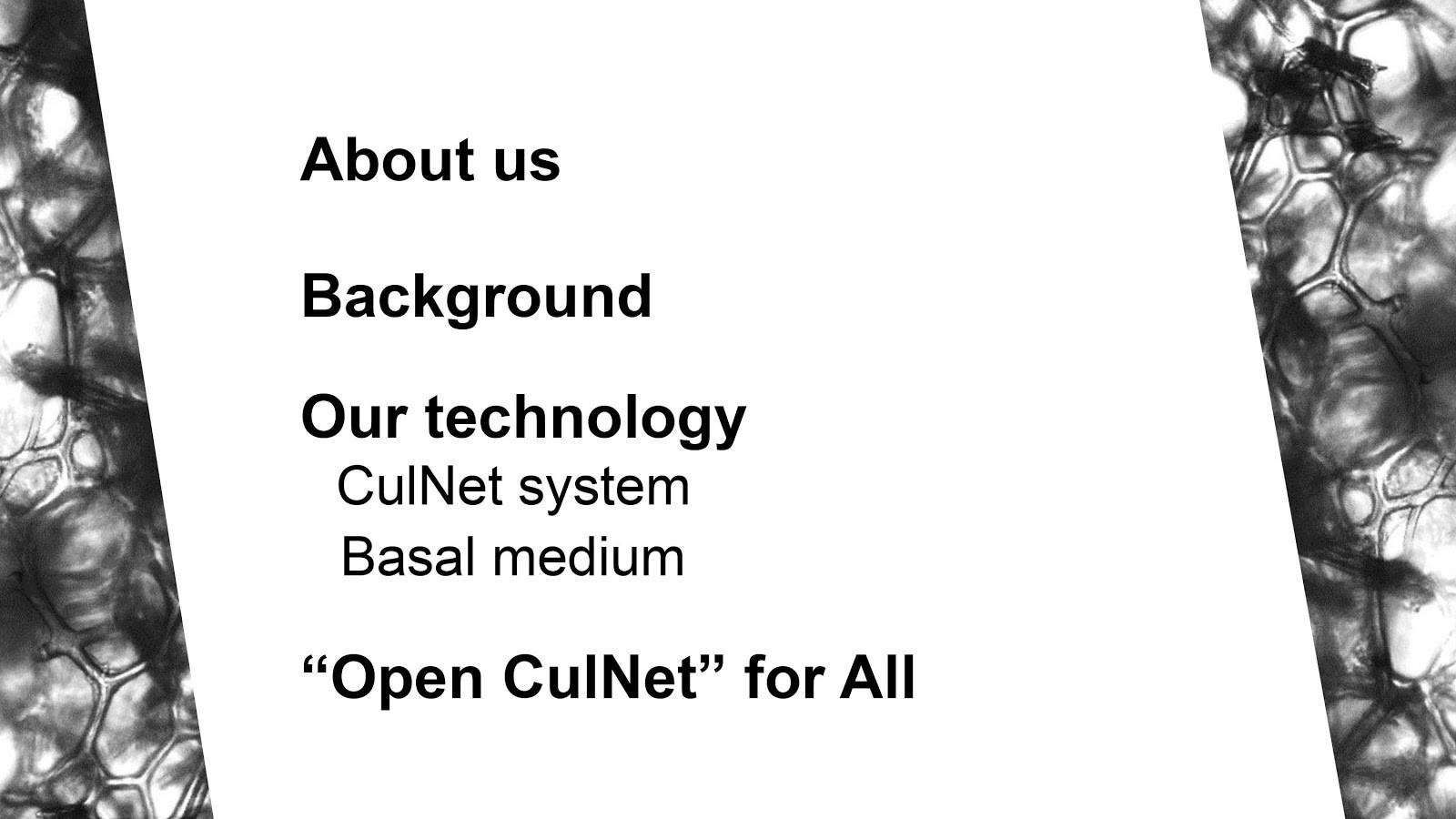
I am covering four topics — 1) about us, 2) the background, 3) our technology and 4) the “Open CulNet” to give everybody a capability to design and make cell-based meat.
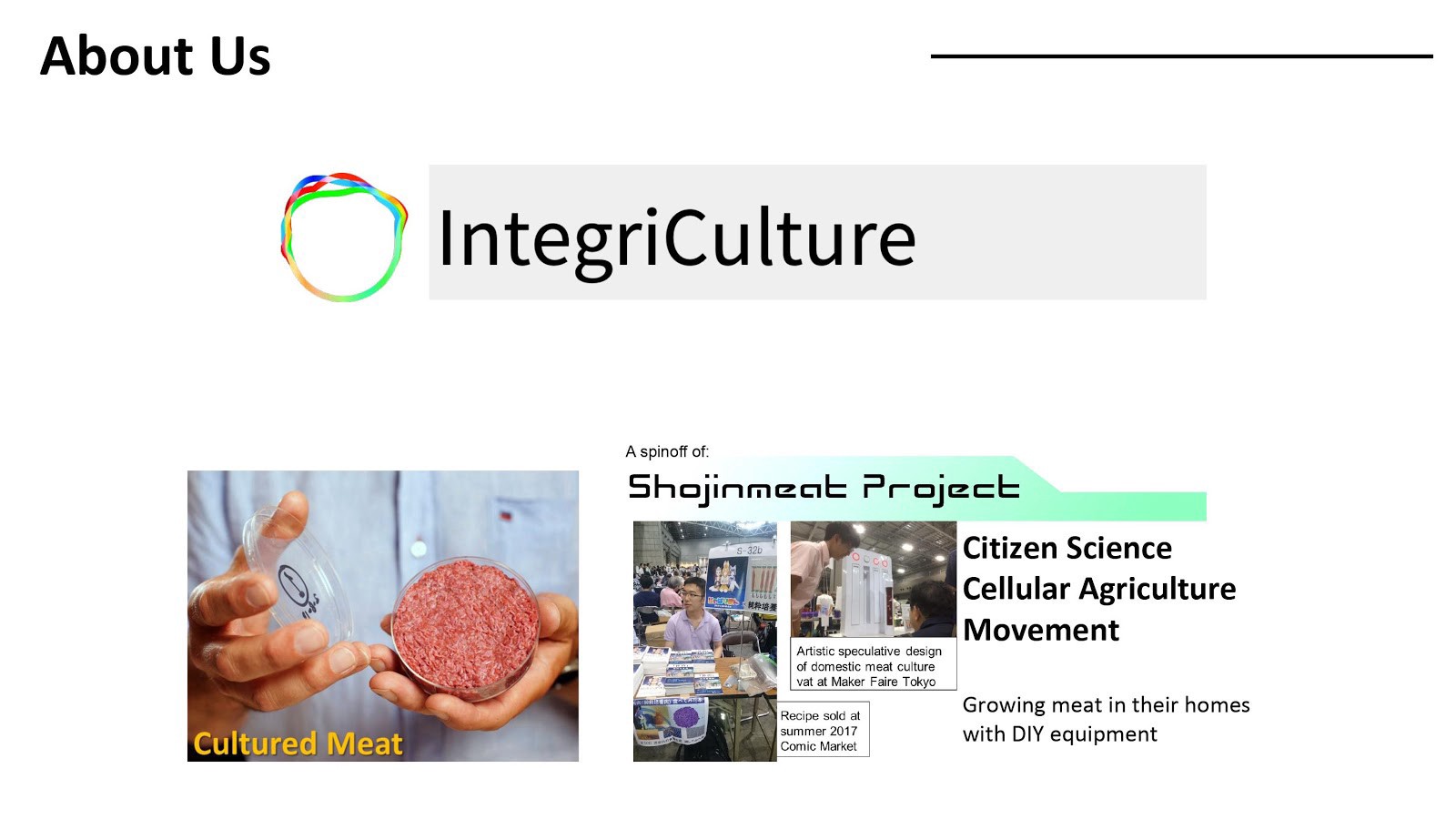
IntegriCulture Inc. spun off with the technologies developed in the Shojinmeat Project.
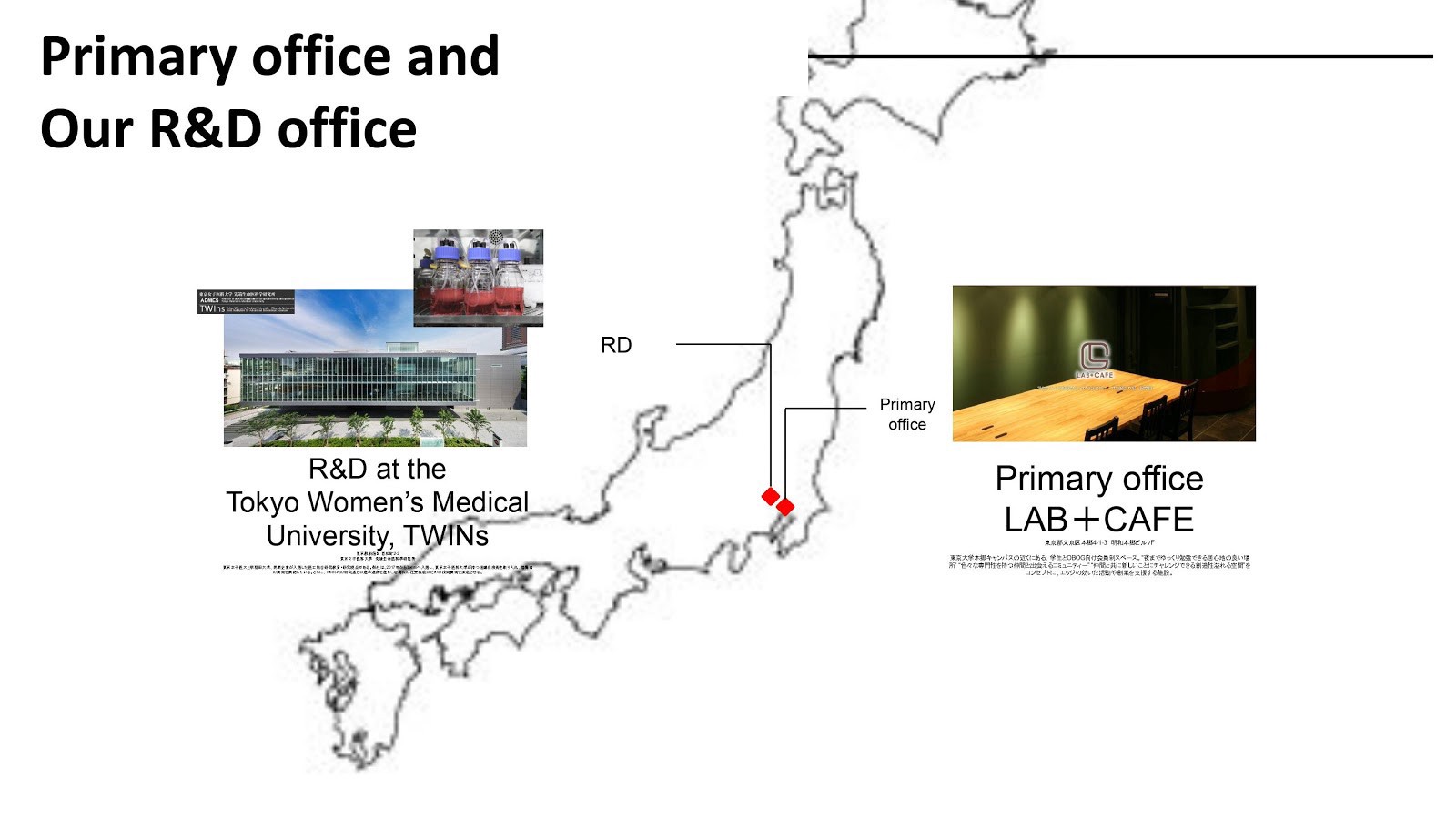
We started in a shared lounge cafe near University of Tokyo in Japan. Our laboratory is situated inside Tokyo Women’s Medical University.
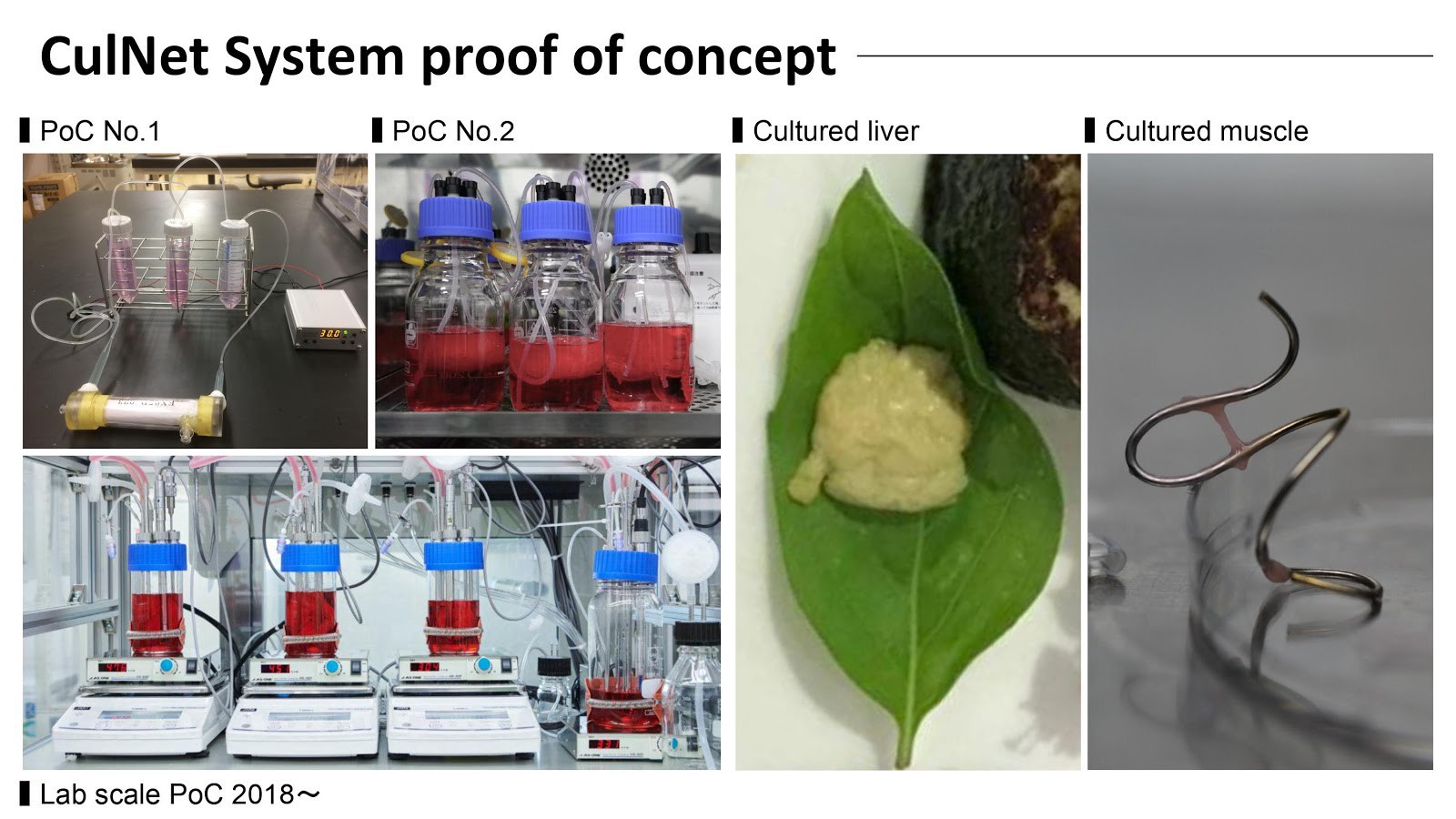
We are developing two things. One is this bioreactor system called the CulNet System, and the other is cell-based meat for consumption as food.

As many are aware, cell-based meat has a price problem as well as a regulatory problem.
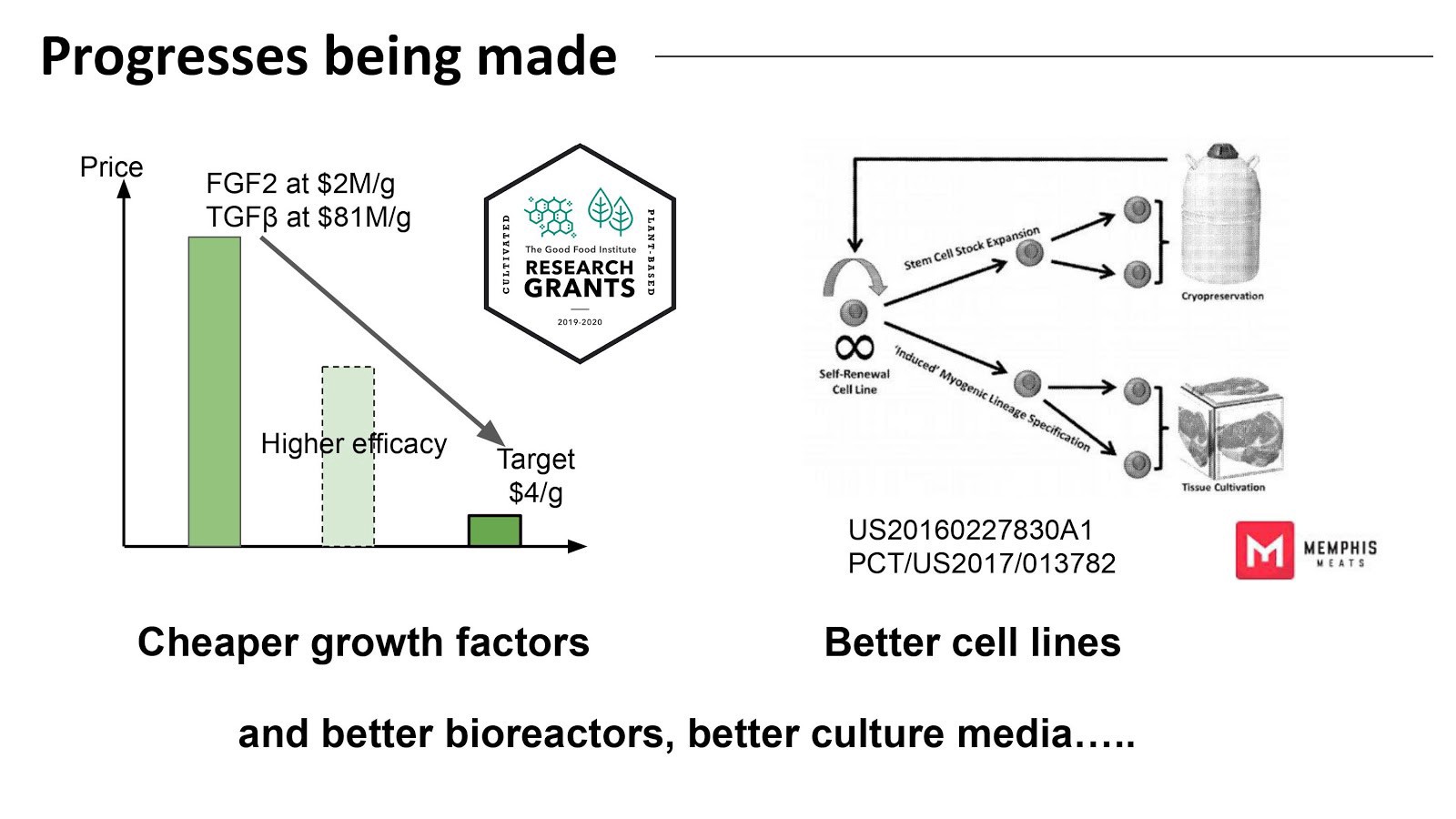
Remarkable efforts have been made to bring down the costs. One is less expensive cytokines or growth factors, as described by a white paper by Good Food Institute. The other is cell immortalization to let the cells grow indefinitely.

However, I think we have come to a stage where we have to look at the elephant in the room.
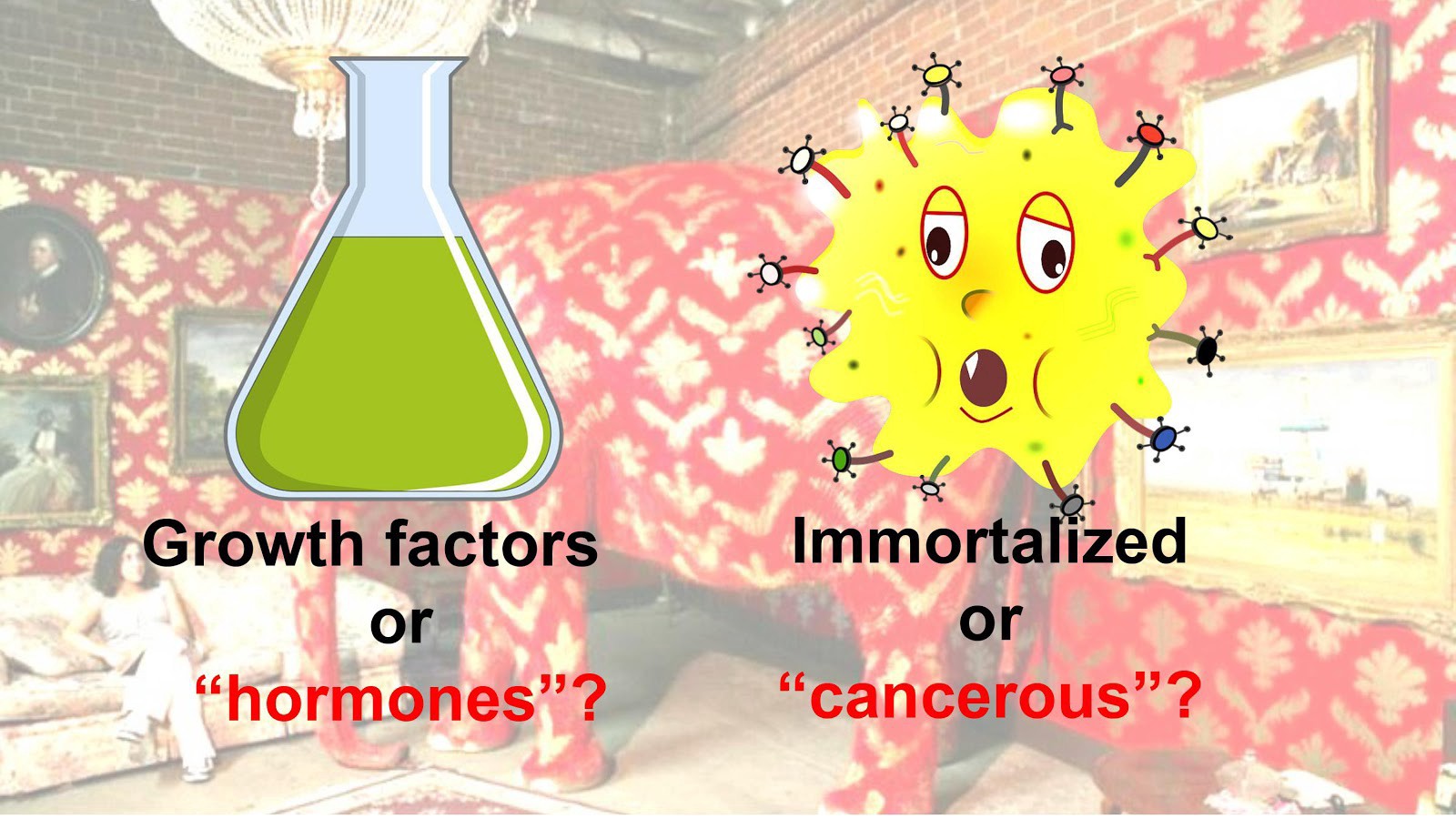
First, the public recognizes cell growth factors as hormones. The other is, immortalized cell lines could be called cancer cells. Hormones and cancer cells — would people be willing to eat them?

While cell-based meat has its fans, it also has it’s opponents who almost always raise these points.
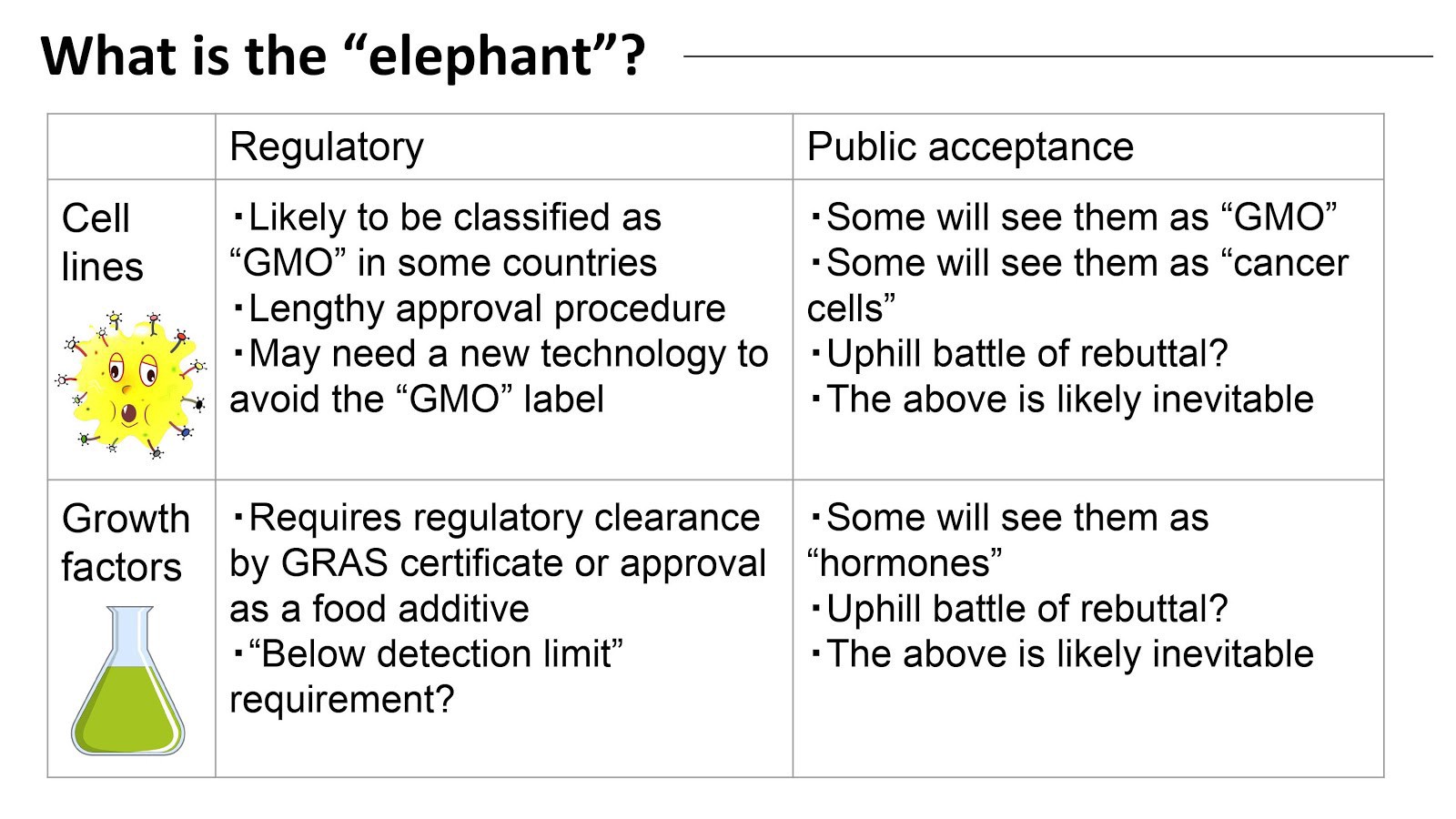
Some of the issues, the Elephant in the Room, is summarized here. There is a potential regulatory issue with genetically altered cells and distinction from GMO. The general public for whom subtle scientific differences is not the primary agenda may see gene-edited food as unsafe, regardless of its regulatory status.
Another is cytokines, or growth factors. The safety must be established and regulatory approval must be obtained for use in food for each one of multiple growth factors like FGF2, TGFb, and so on. On top of that, even if safety is proven and regulatory approval is cleared, there will be people who don’t like the idea of “food doped with hormones.”
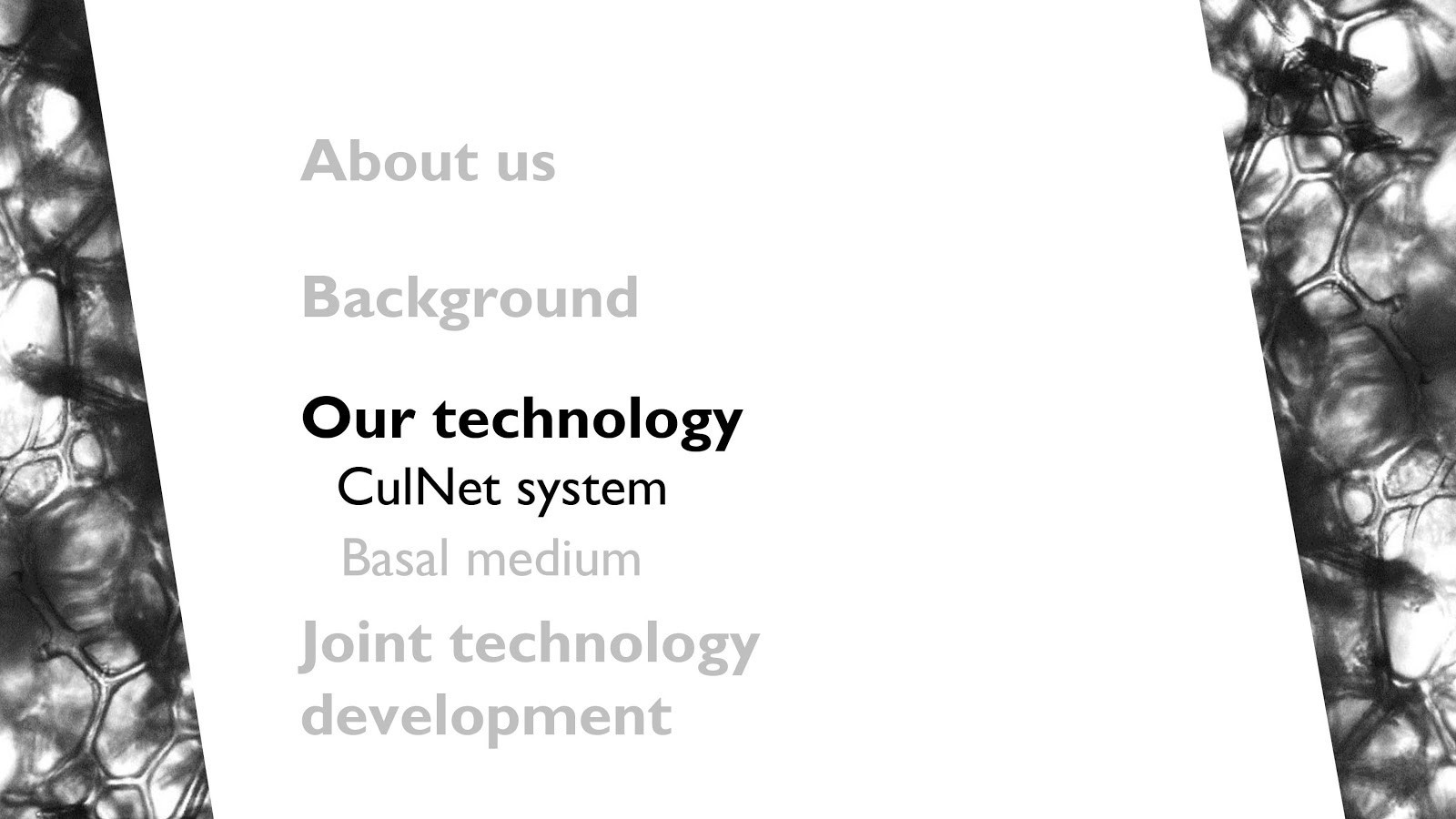
So, what do we do? Here, I would like to talk about the technological approach we take.

In a nutshell, our technology does not use immortalized cell line or growth factors. This makes cell-based product made by our technology already compliant with food regulations in some countries, and could potentially better communicates with consumers. Here are some descriptions of how our “CulNet System” technology works.
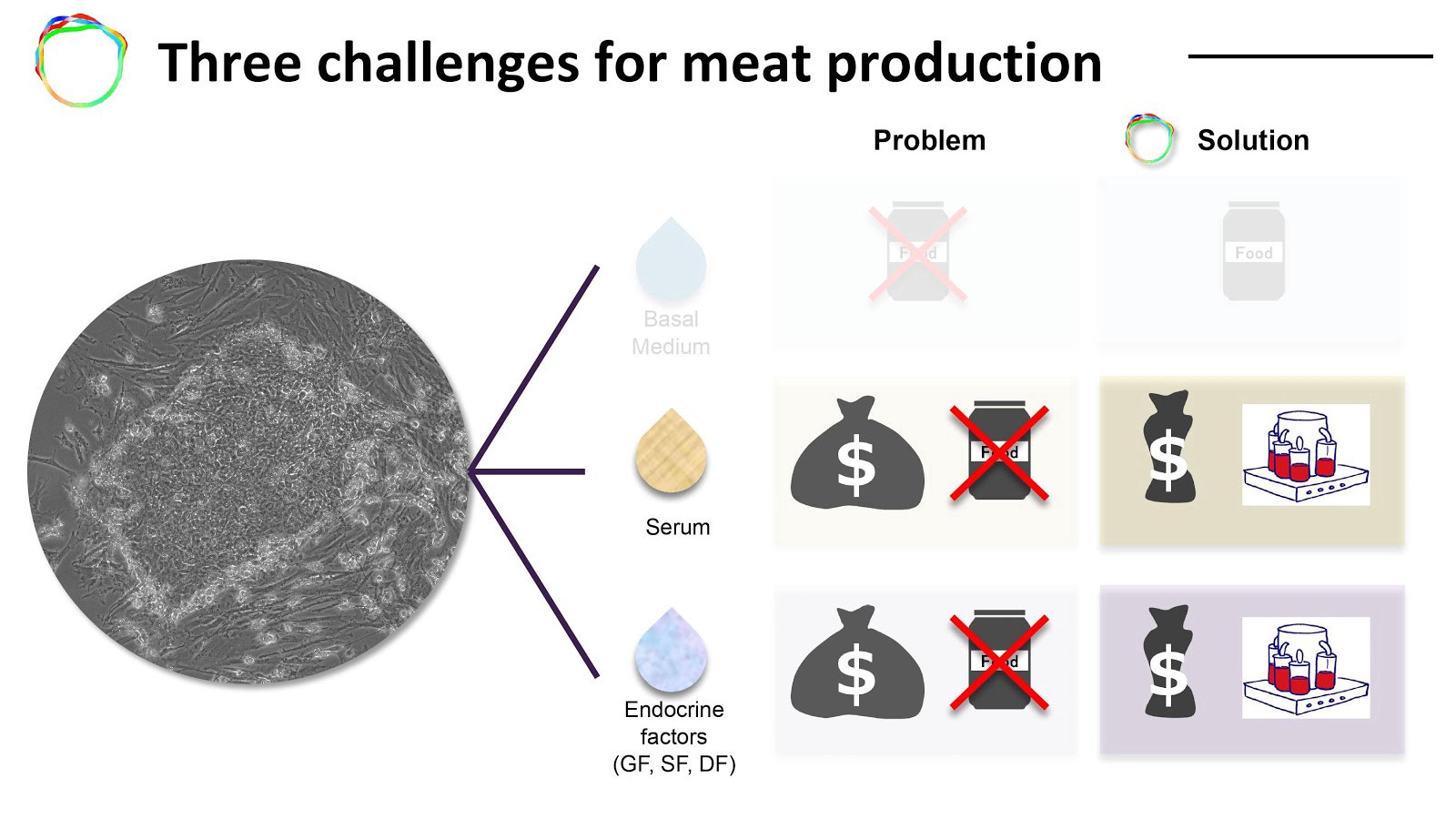
CulNet System can generate serum components and growth factors, or cytokines. There used to be economic and regulatory issues with them. We are tackling these issues by mimicking the animal body endocrine mechanism, thereby removing the need to introduce from outside any serum or growth factors into the cell culture system.
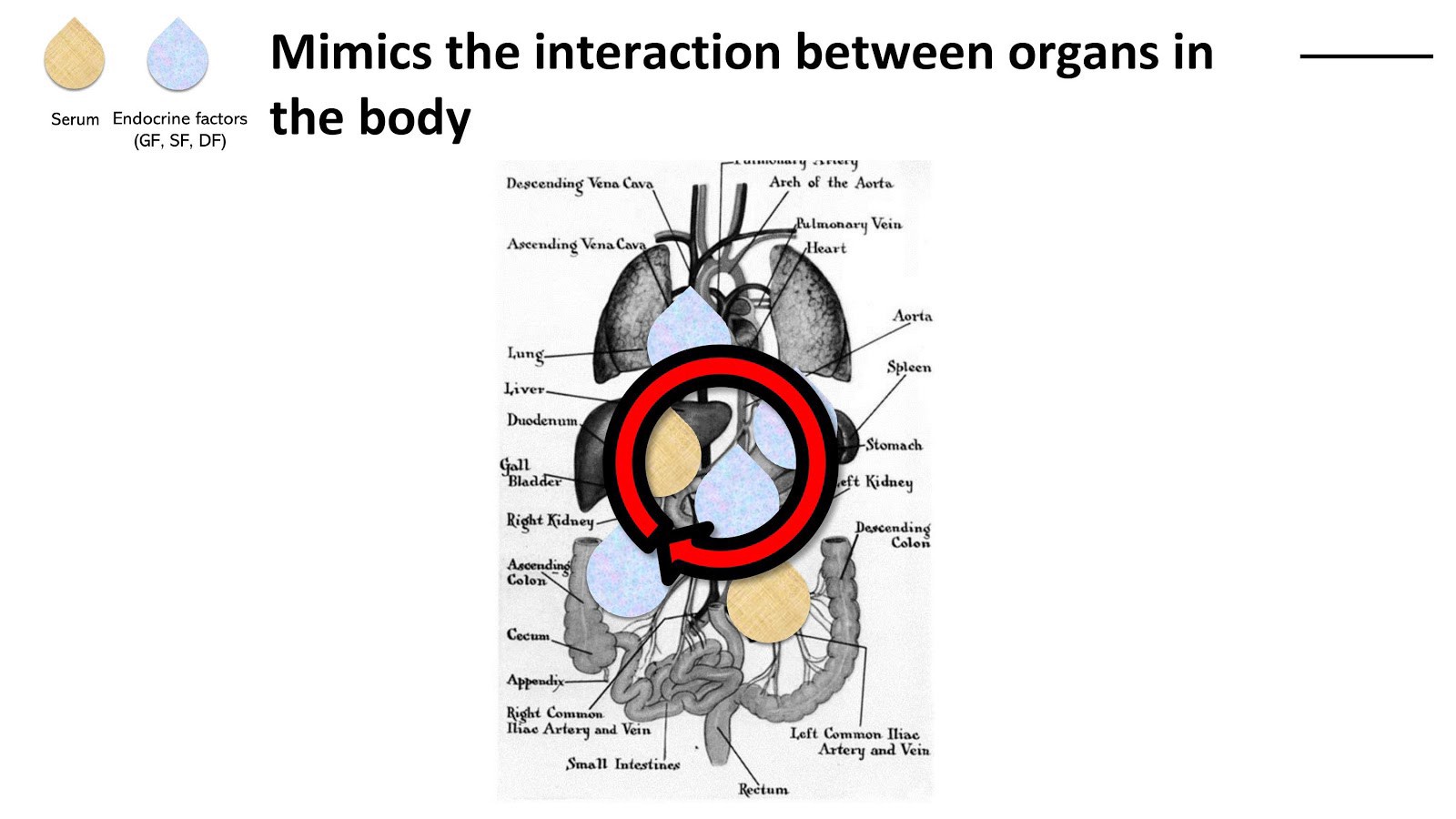
It happens by establishing inter-organ interactions inside our cell culture system.
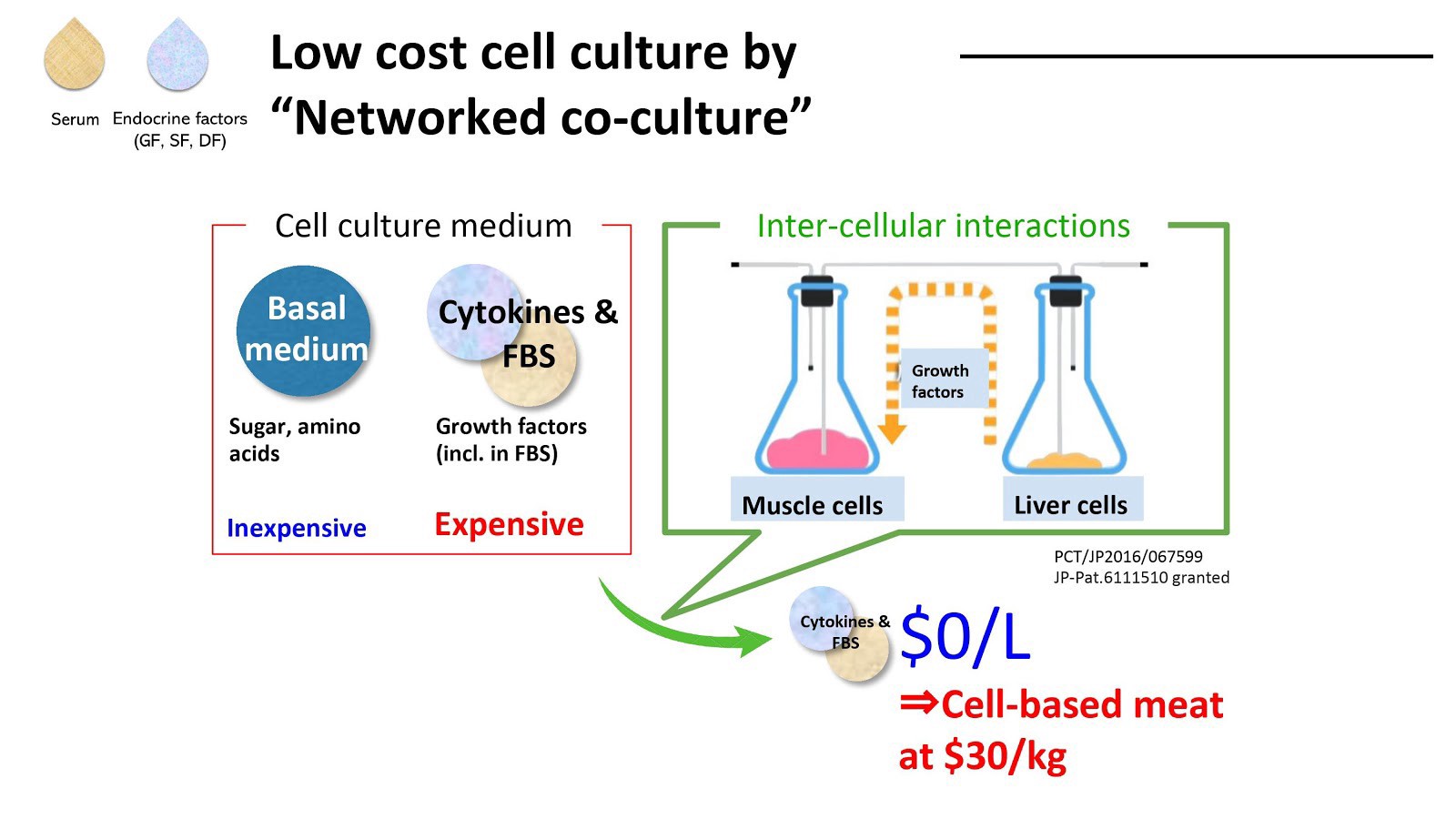
Muscle cells require growth factors, many of which are produced by liver cells. Other growth factors are produced by some other organs. We culture the target cells — mostly muscle, fat, and organ cells in separate bioreactors, connect the bioreactors to form a closed loop where culture medium circulates like bloodstream, and let the cells help each other to grow. Through this whole body emulation, we remove the need to add serum or growth factors, thus lowering costs.
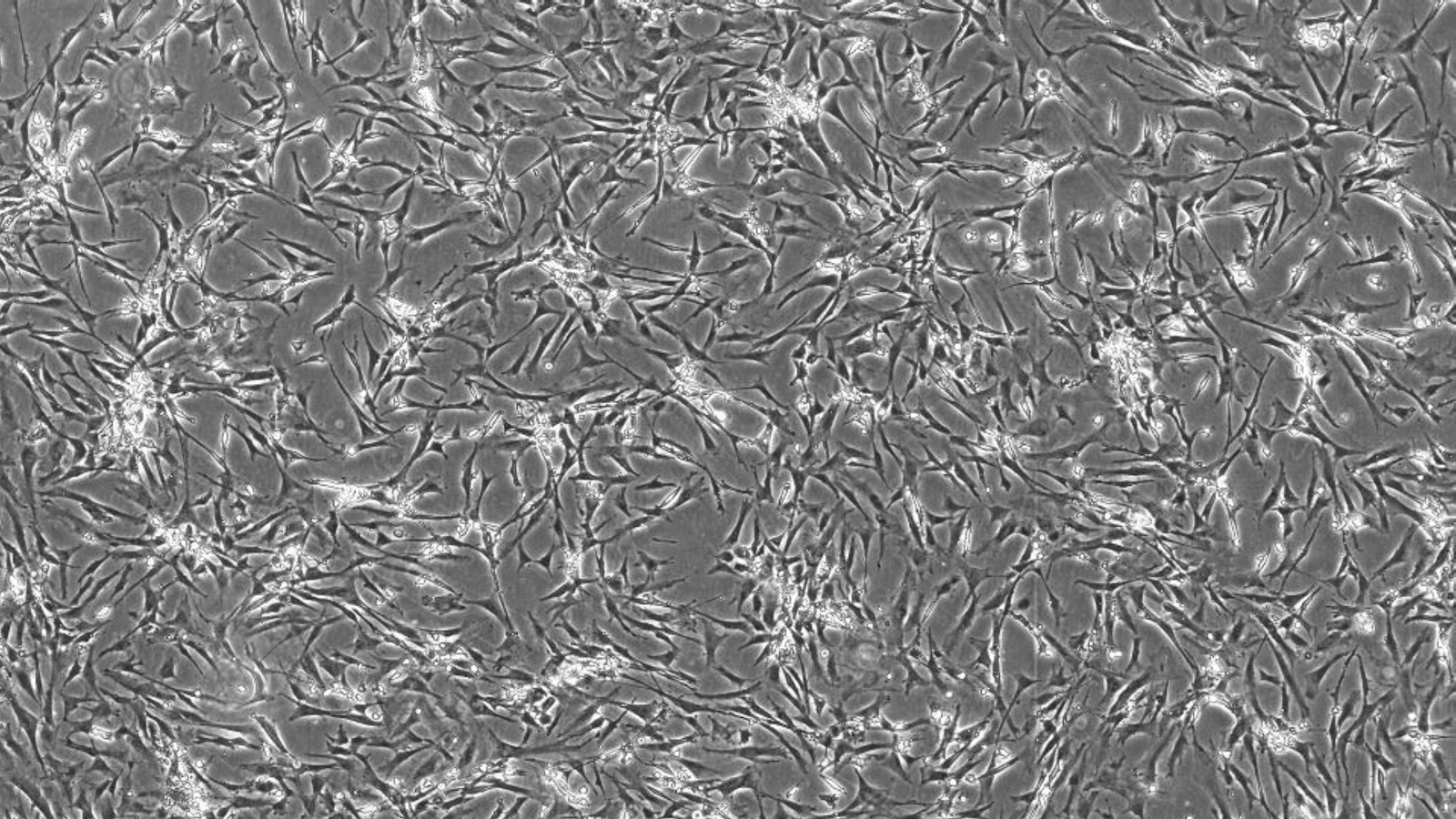
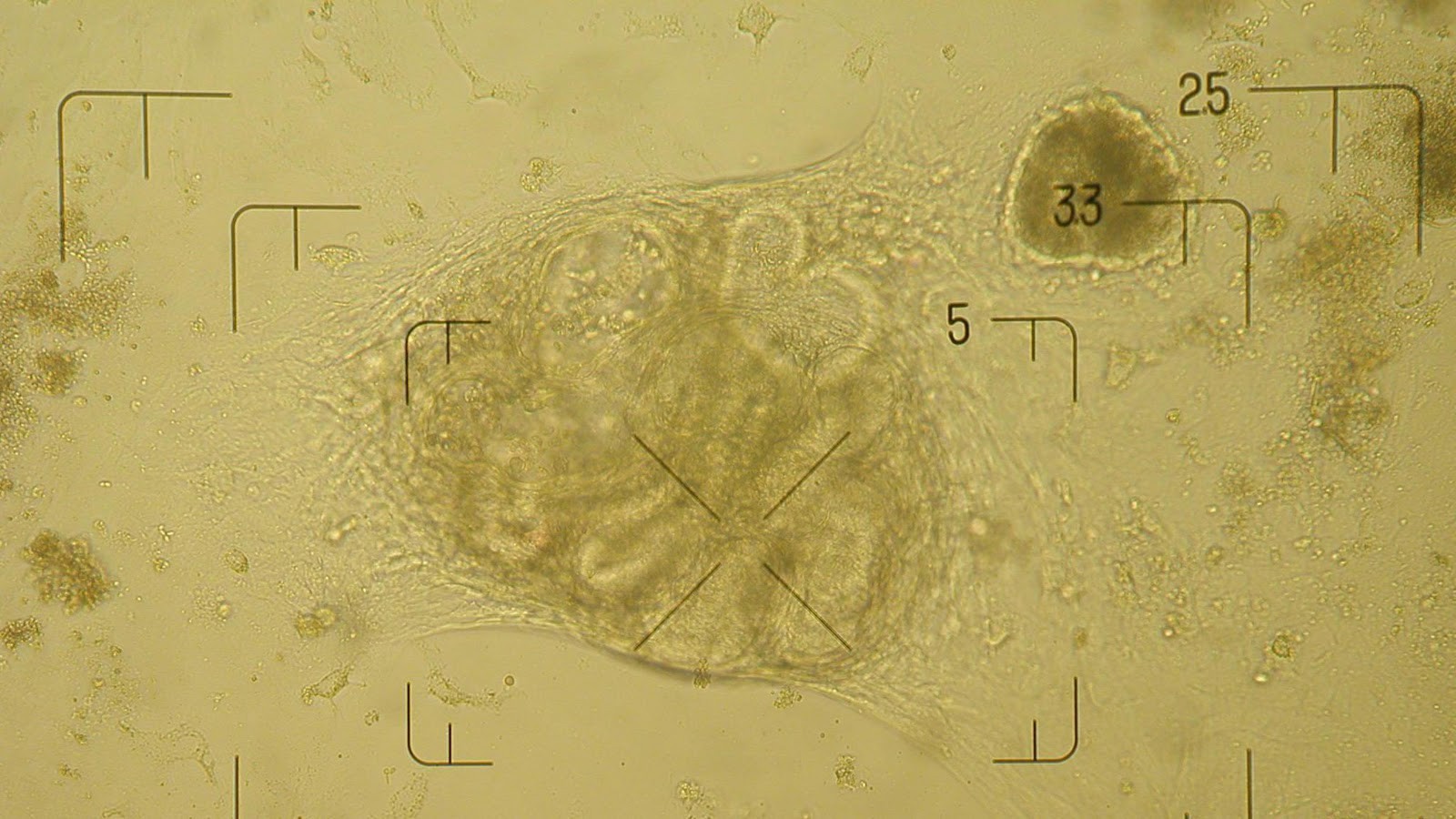
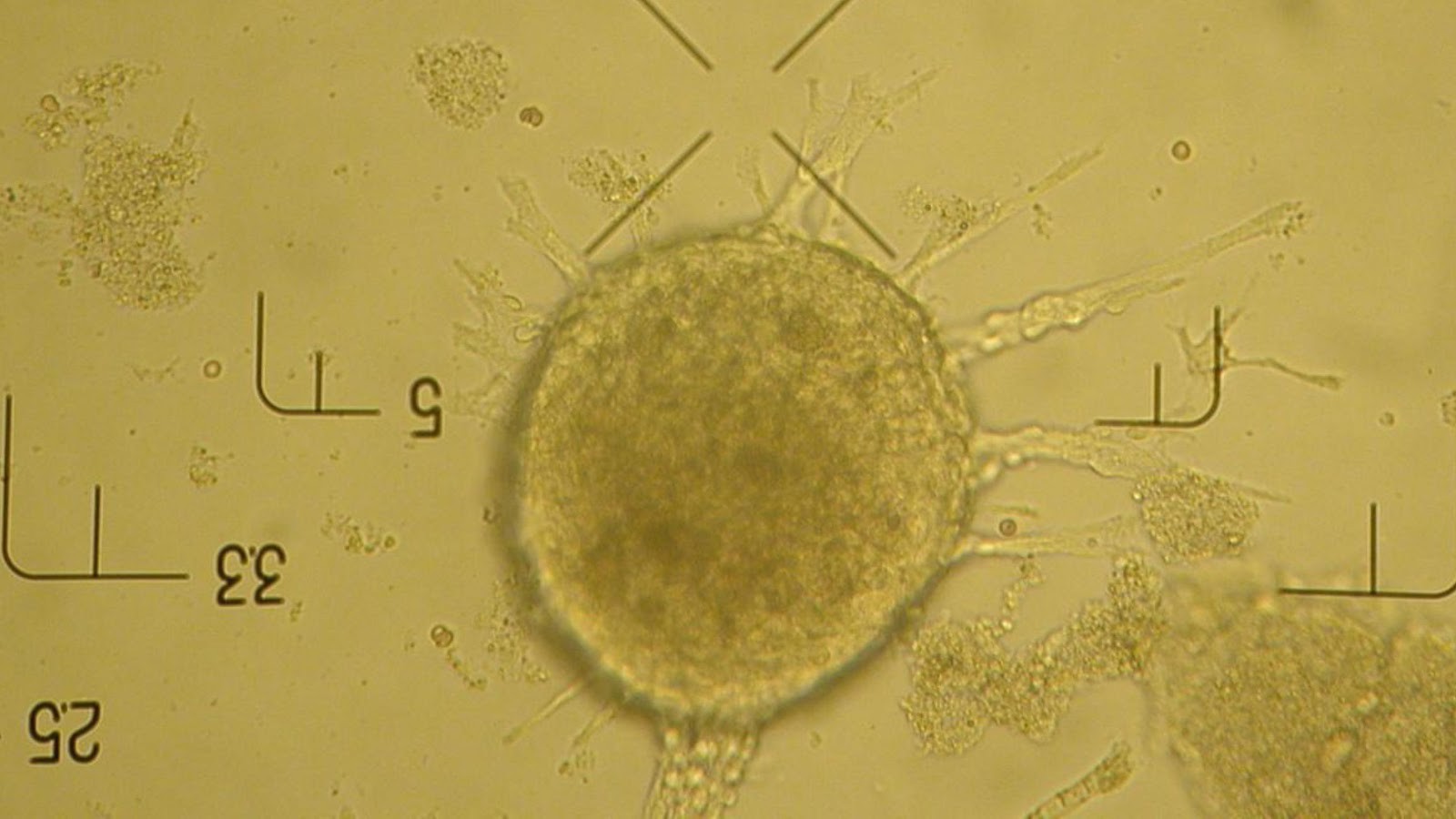
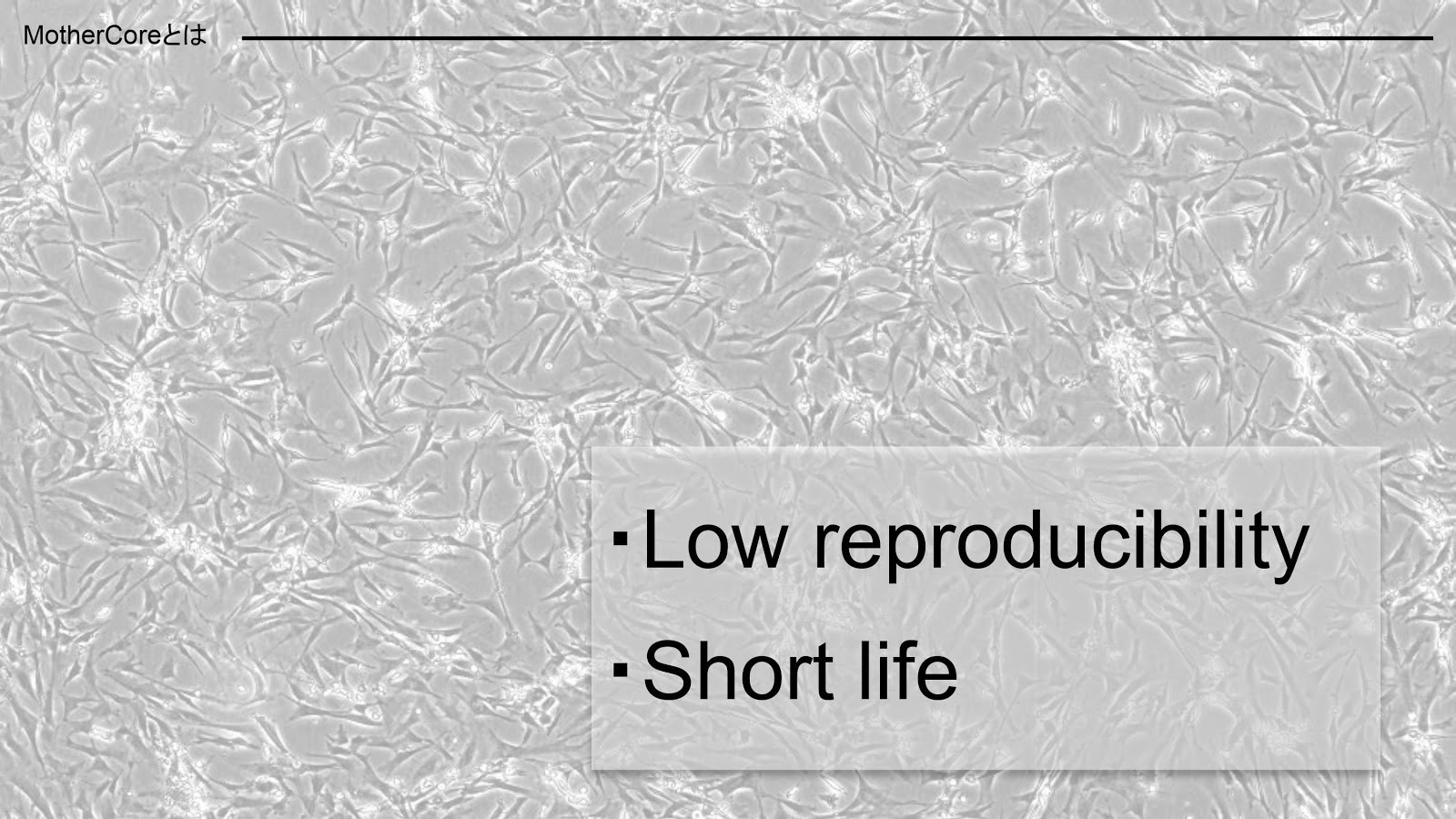
These are examples of neatly done cell culture. The conventional cell culture protocols often suffer from low reproducibility and short cell life. Once the cells fill a dish, or reach confluence, the cells easily detach and die.
But we have achieved organ cell culture and organoid formation at a similar quality using the CulNet System. In fact, some of the microscopic pictures in previous slides represent cultured brain cells.
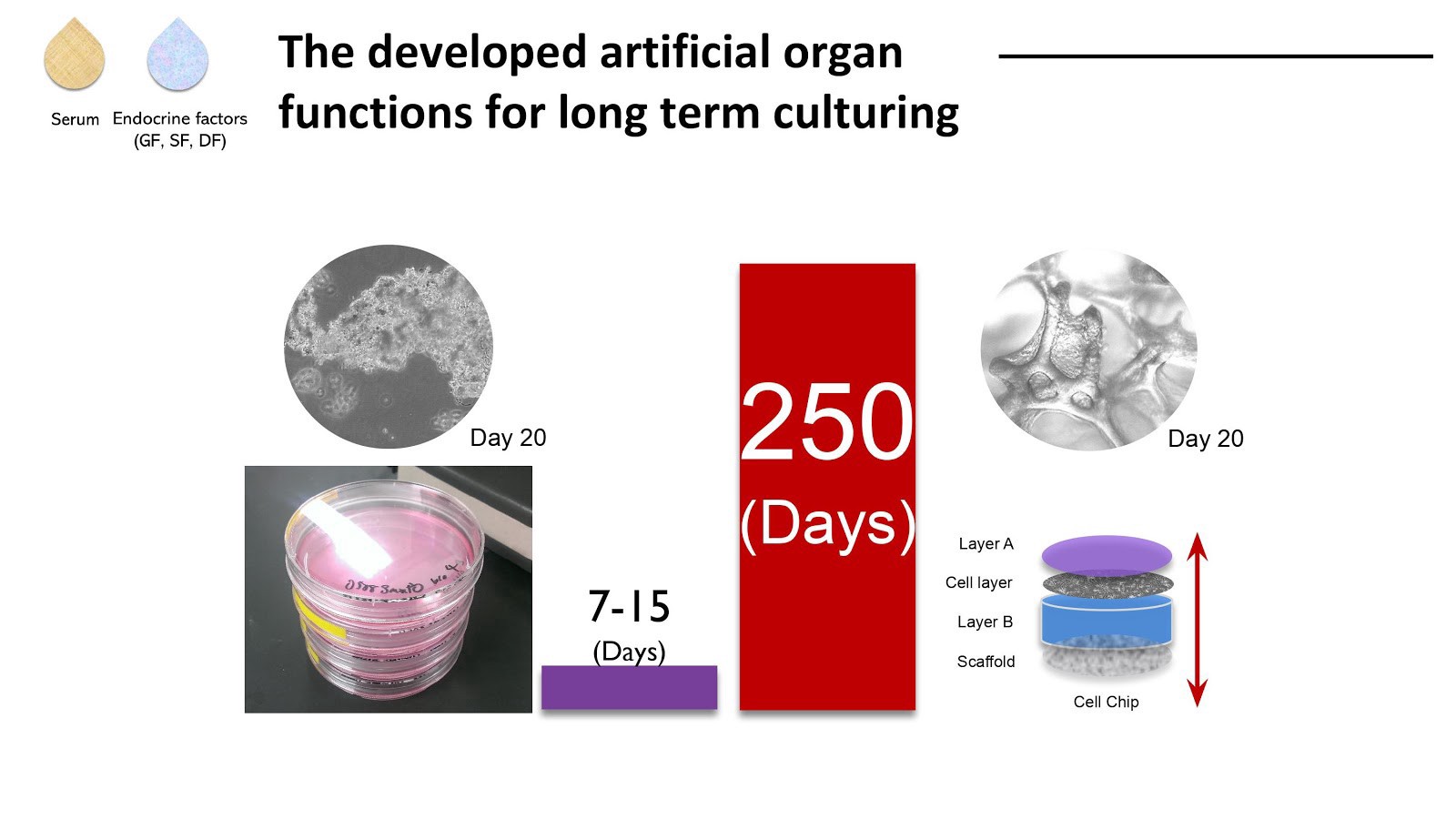
We extended the cell life from 7–15 days to over 250 days by housing them in a scaffold system we call the “cell chip.” This allowed organ cells to keep producing growth factors for a long time without changing the cells. And we’ve made such cell chips for multiple organs, to produce not only specific growth factors but whole “cultured serum.”
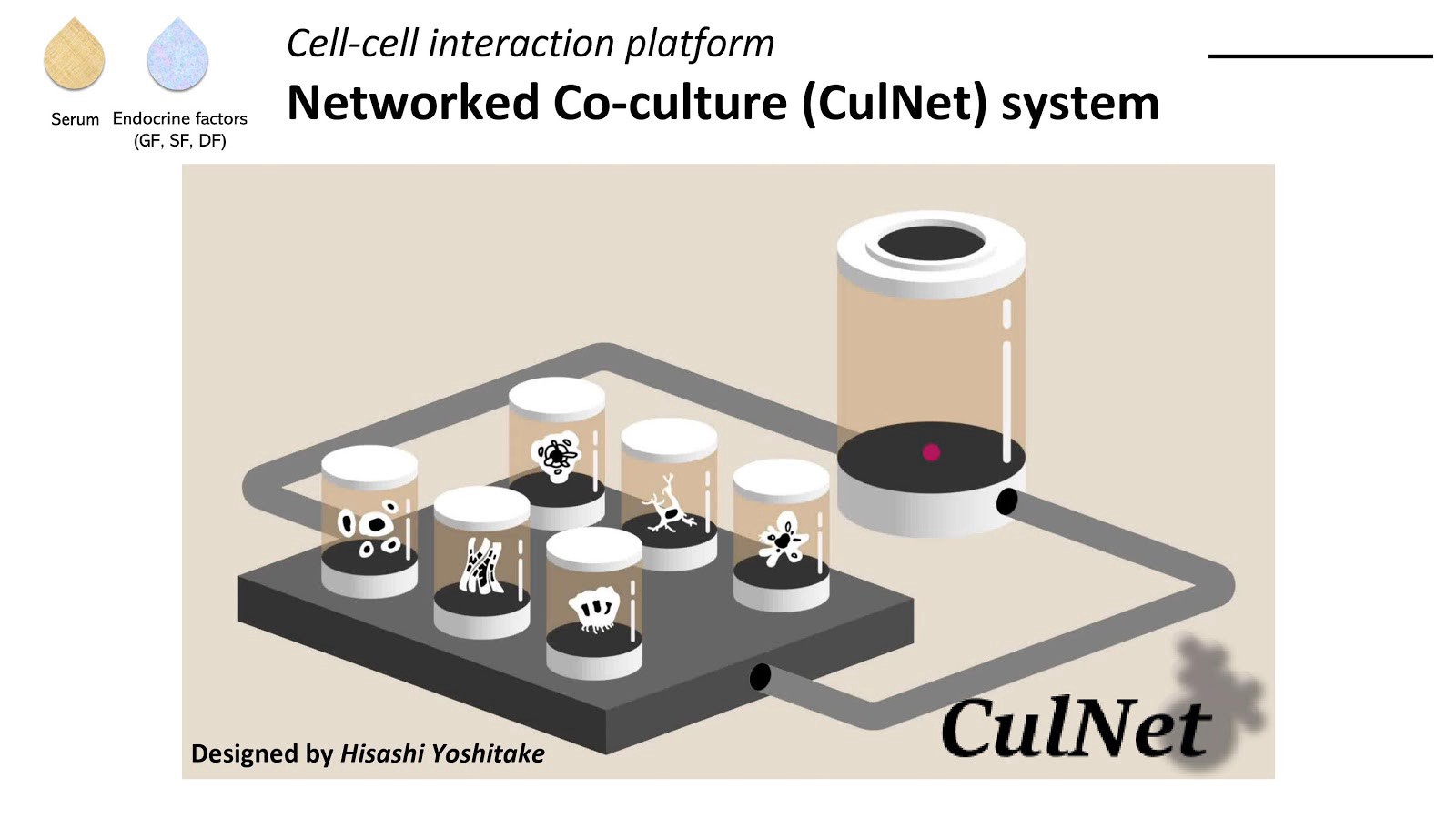
Here is another schematic of the CulNet System. On the left are six different feeder bioreactors; on the right is the main bioreactor, inside which is the red myoblast cell.

First, culture medium that flows through a specific combination of organ cells stimulates the myoblast to multiply. Culture medium with different combinations of organ cells can make the myoblast cell increase in size or differentiate into muscle fibers. We control cells by changing the combination of organ cells.
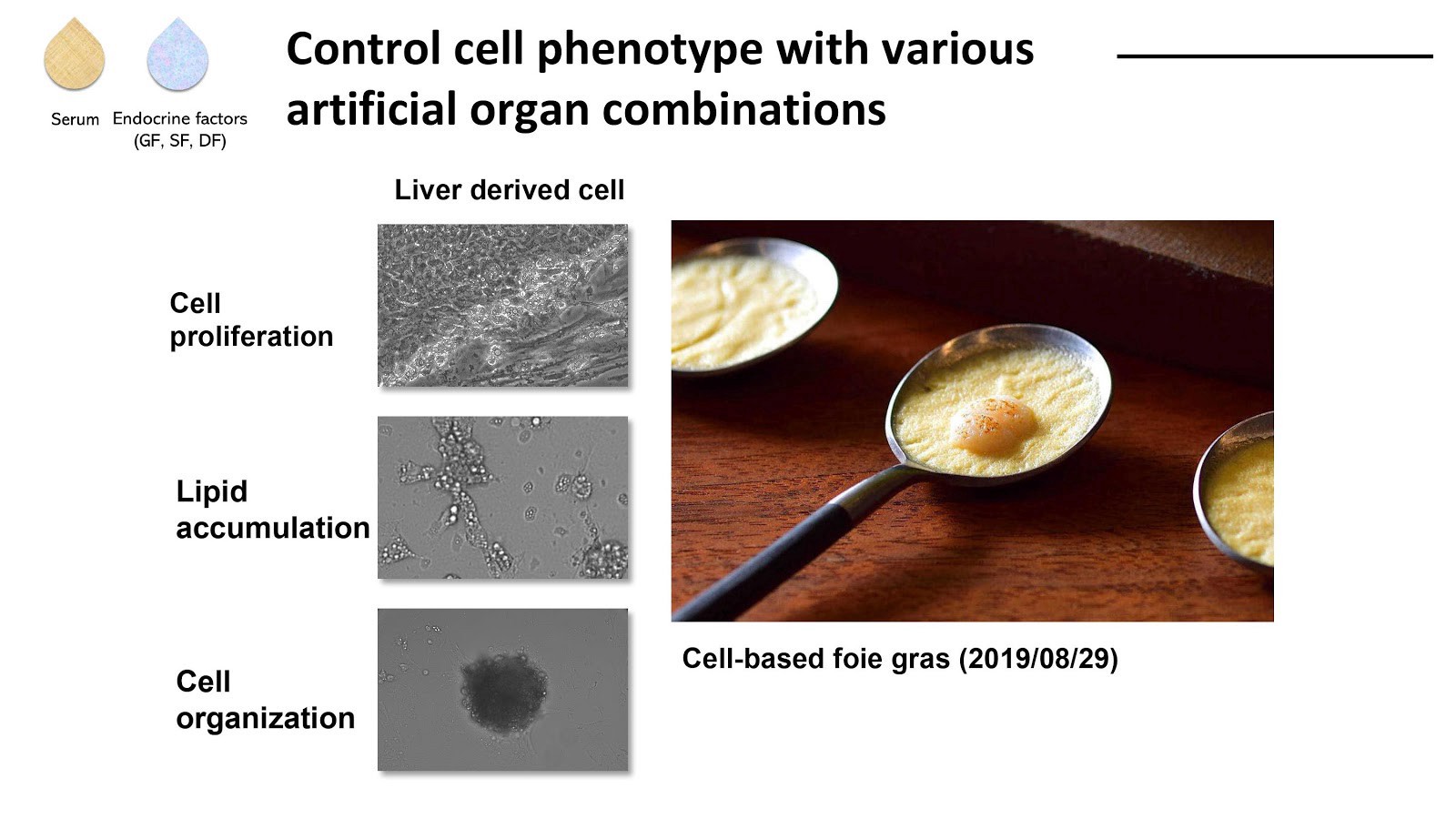
We’ve done this on goose liver cells. We successfully achieved cell proliferation, lipid accumulation, and cell clustering. We made this foie gras last summer and received very positive comments from a chef. Apparently, the taste was slightly different from real foie gras, but with more umami, and he commented he was impressed.
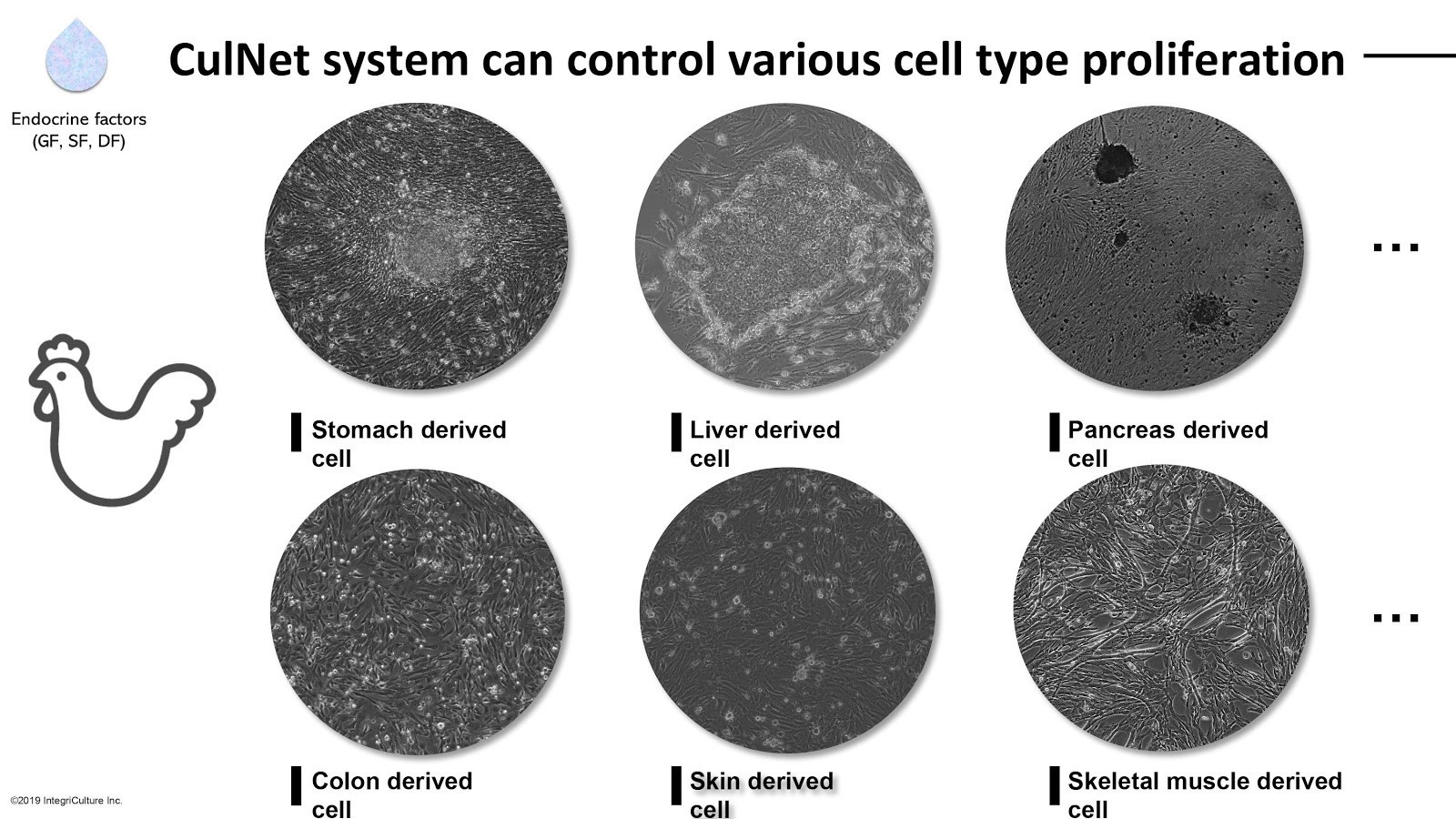
We are doing this to other cell types and species. Here are chicken stomach, liver, pancreas, intestine, and skin cells.
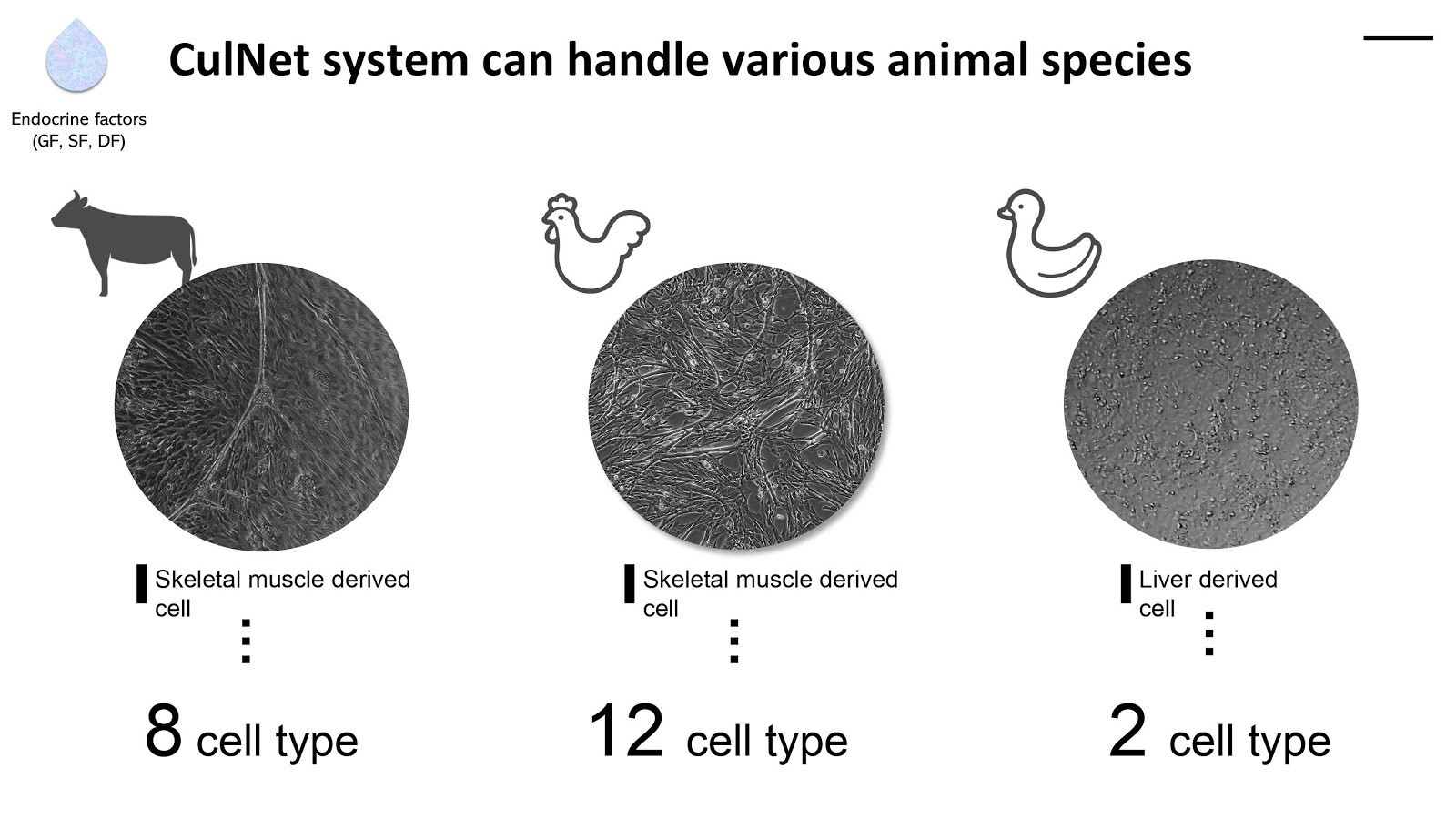
Similarly, we’ve done this on cow and goose. In theory, the CulNet System can apply to cells of any type of any species, terrestrial, aquatic or avian.
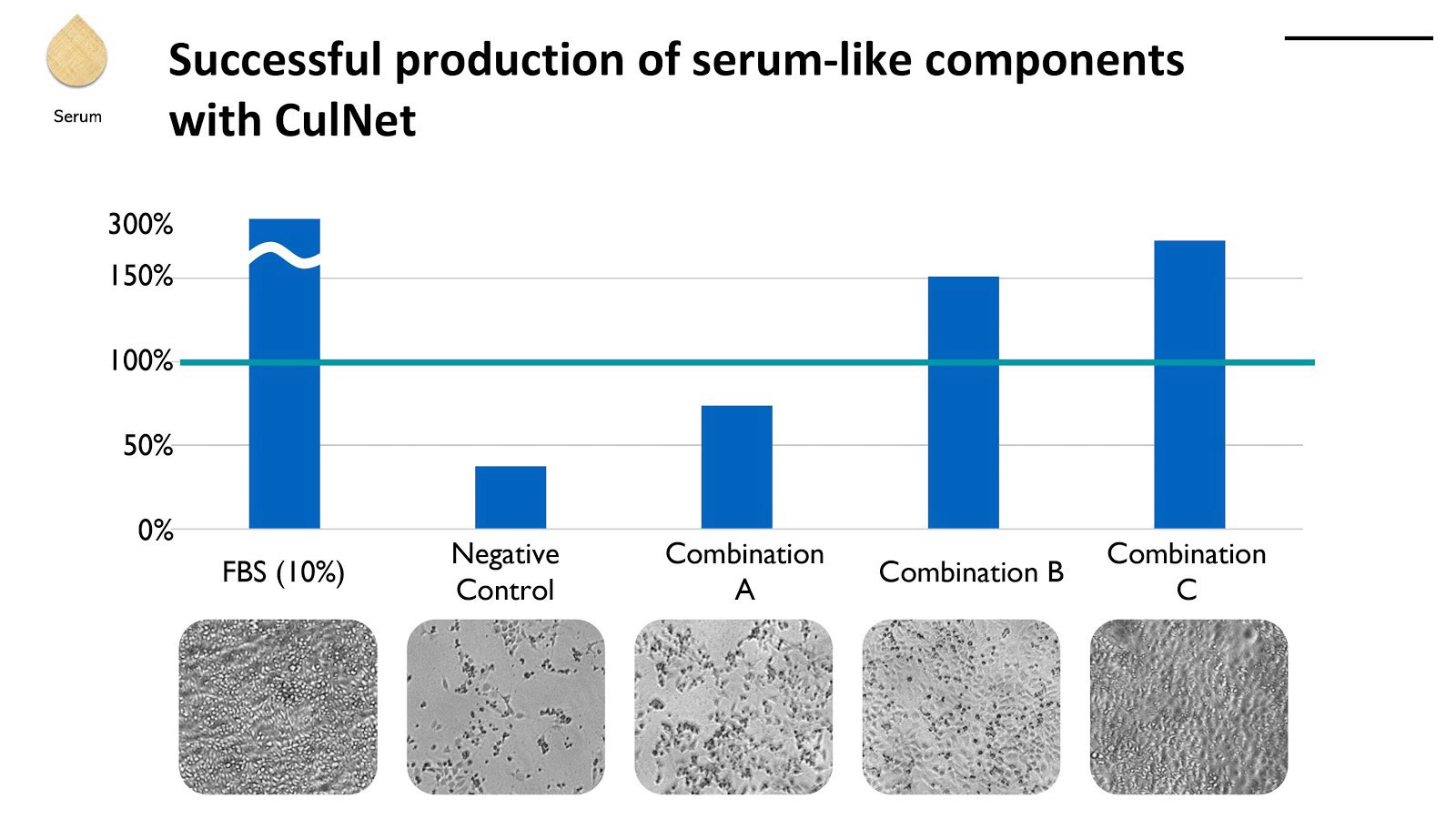
This graph compares the cell culture efficiency of conventional foetal bovine serum with that of our cultured serum. The result on chicken cells is improving by each attempt.
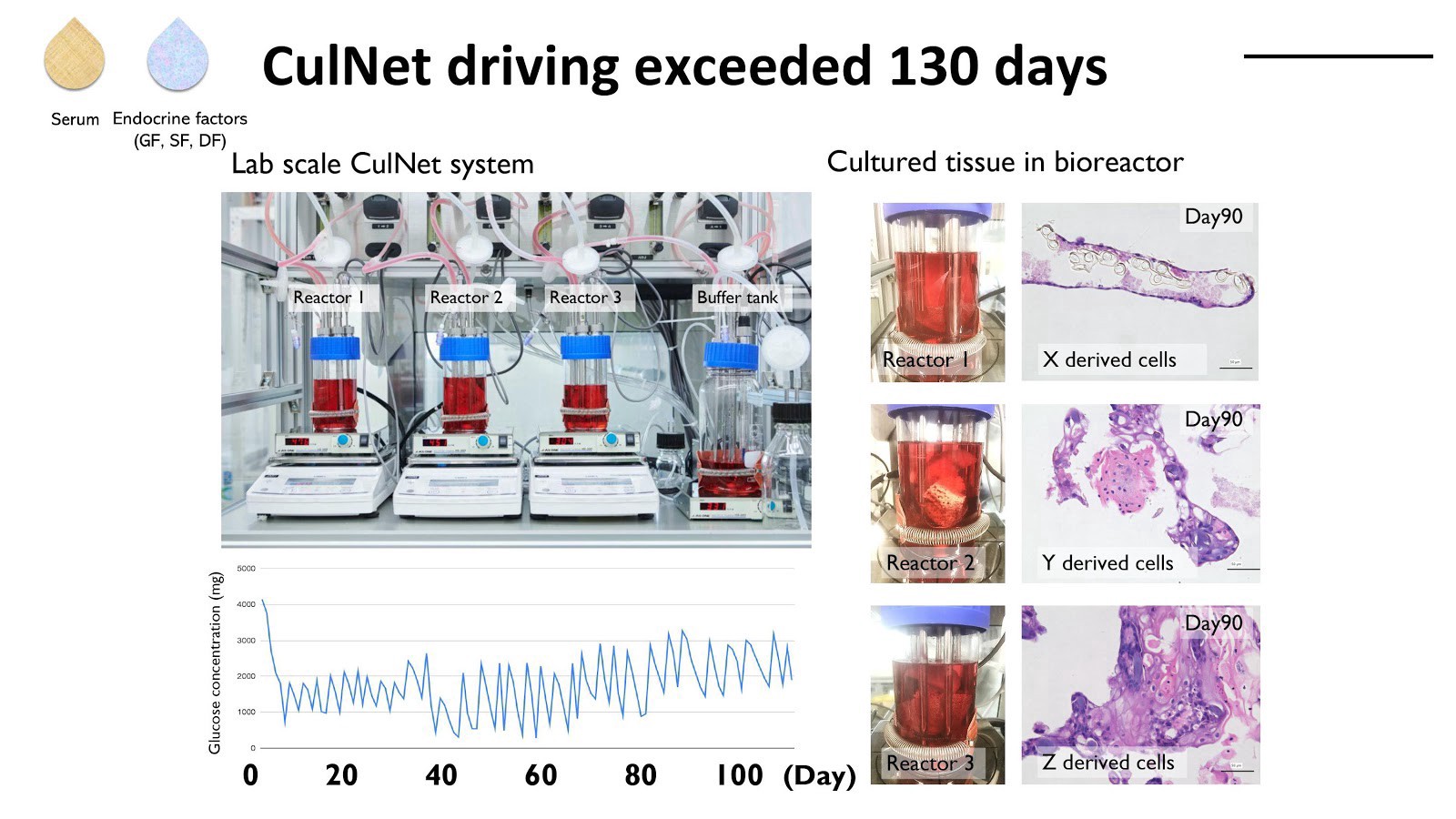
In one of the attempts shown here, organ cells in feeder bioreactors self-assembled for long-term survival and actively produced cultured serum and growth factors for 130 days.

The same is applied to cow cells. The concentration of proteins that represent serum and growth factor components, has been raised up to half of 10% FBS culture medium. This will soon be further improved.
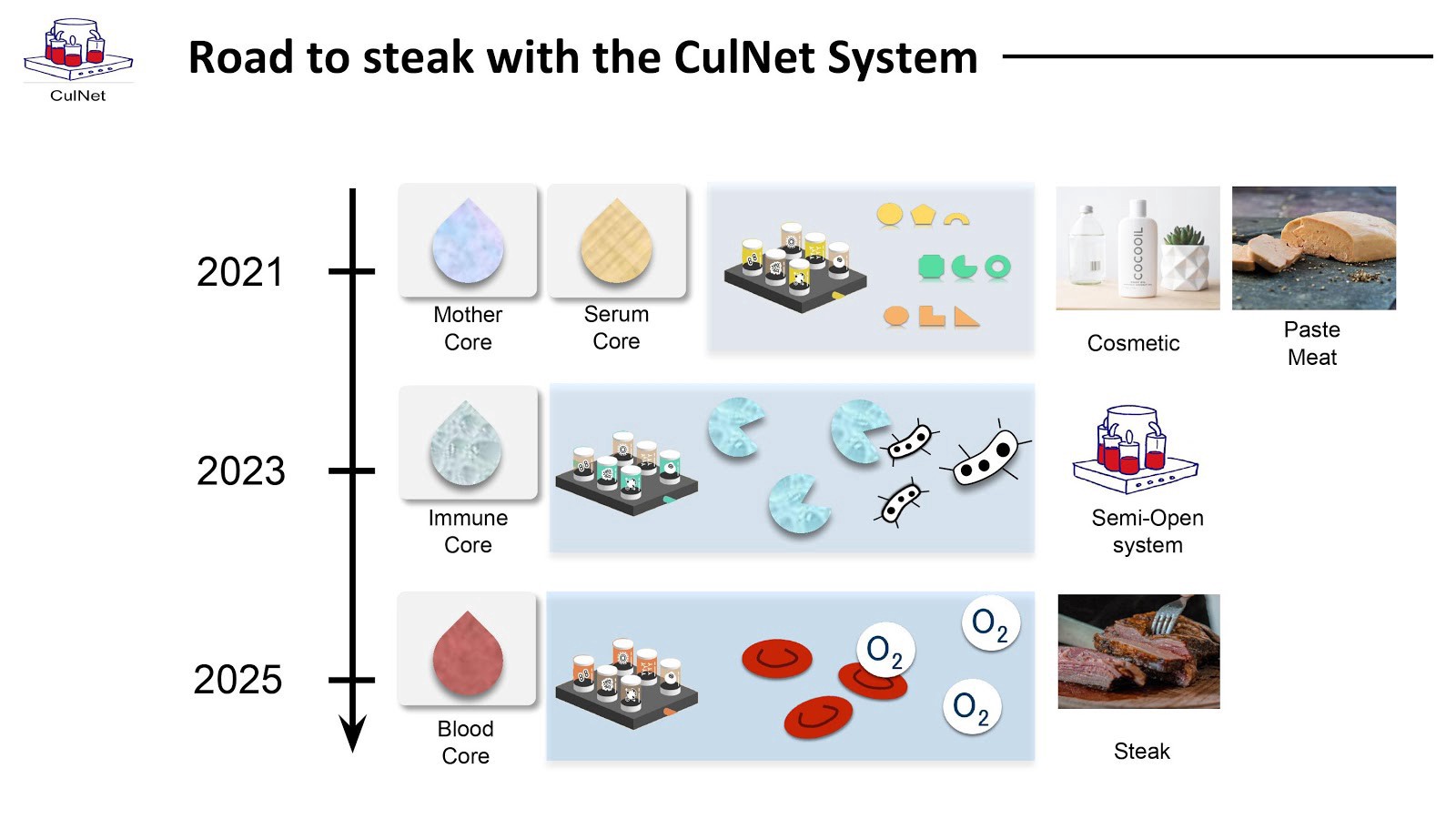
Onwards, we are planning to complete the development and market-launch the CulNet System that produce cultured serum. This allows for production of functional compounds for cosmetics application, or pasty food product such as foie gras. We are planning 2021 launch of cell-based foie gras. In 2023, we plan to add humoral immunity to allow for cell cultured in an open environment. In 2025, we plan to add red blood cells to allow for high-density oxygen transport capability that makes thick tissues possible.
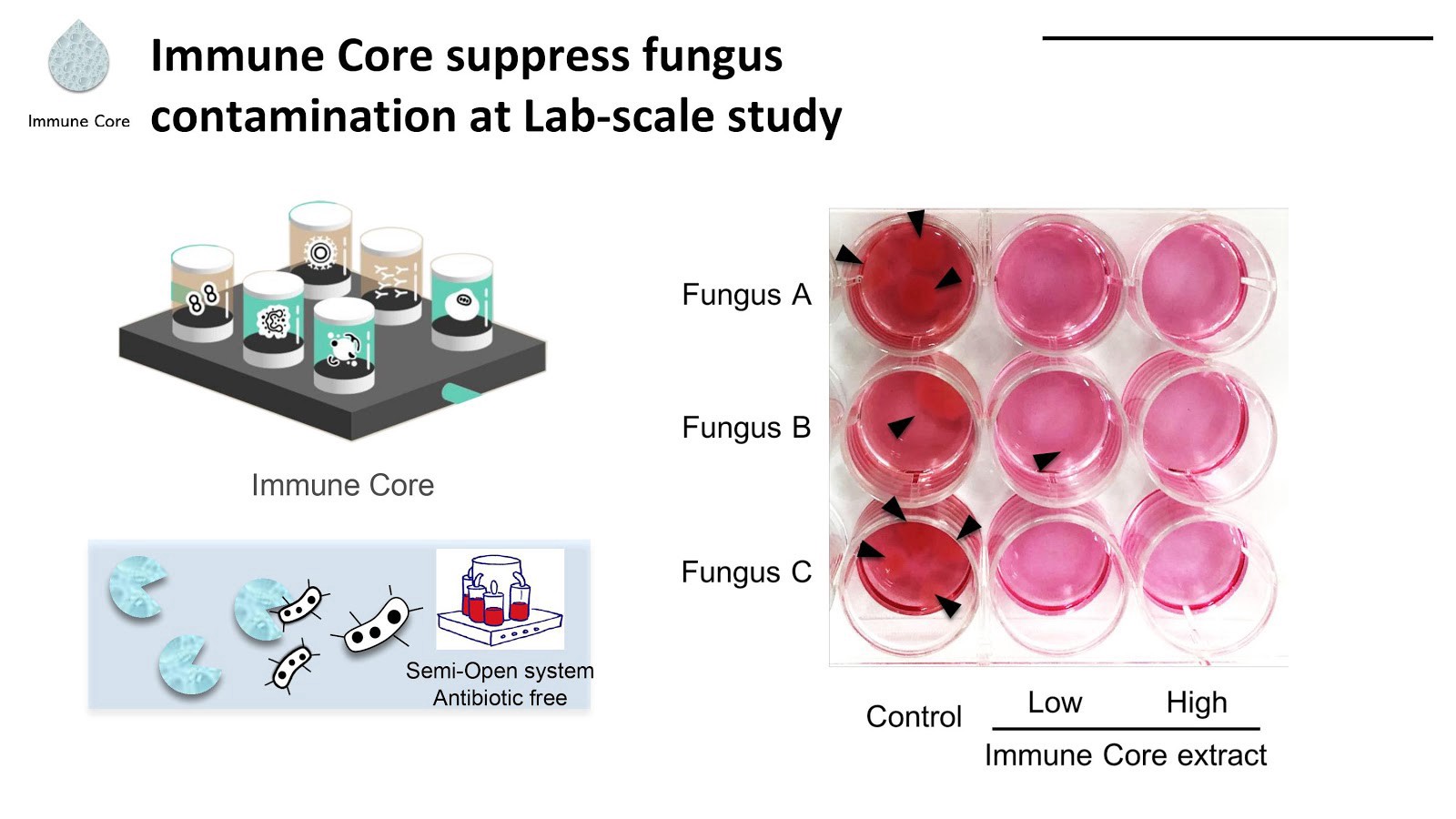
Here are some preliminary results on humoral immunity. By adding culture medium that came through a certain combination of cells, mould is notably suppressed.
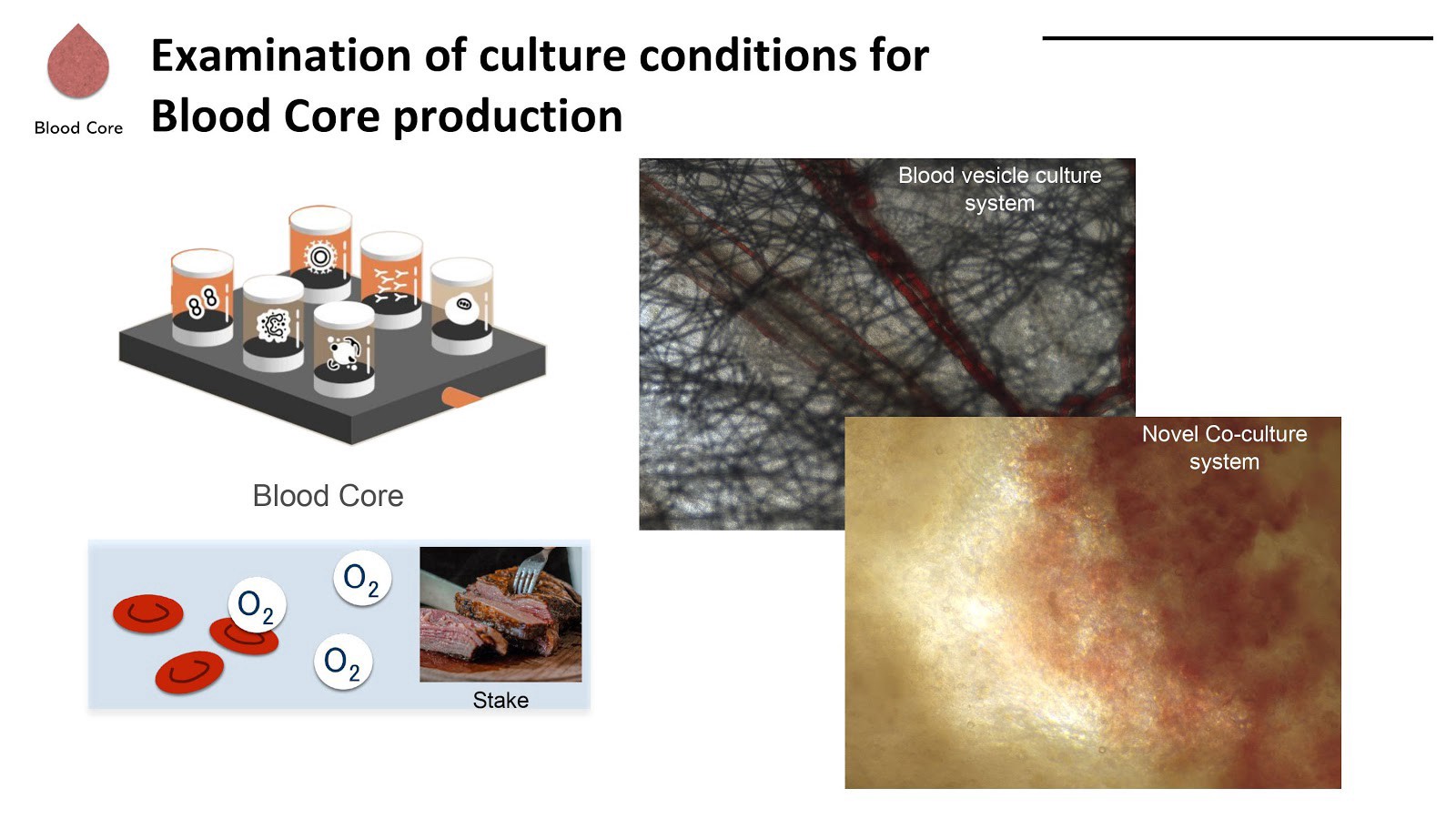
We are also developing long-term erythrocyte culture protocols to produce red blood cells, and to sustain vascularization for a long time.
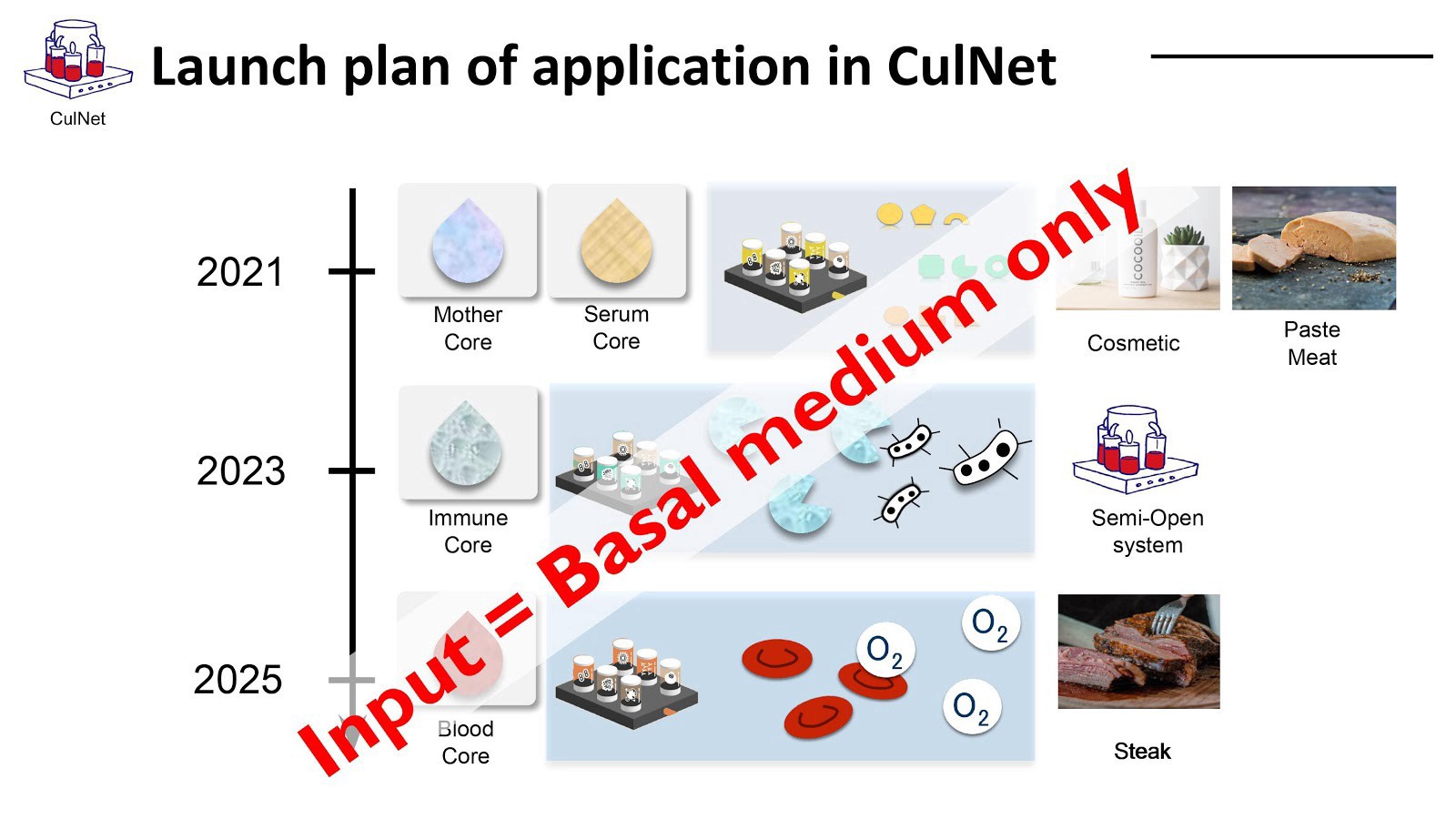
So, the CulNet System would take just basal medium to culture cells for many different applications. This has never been done in industry or academia to date.
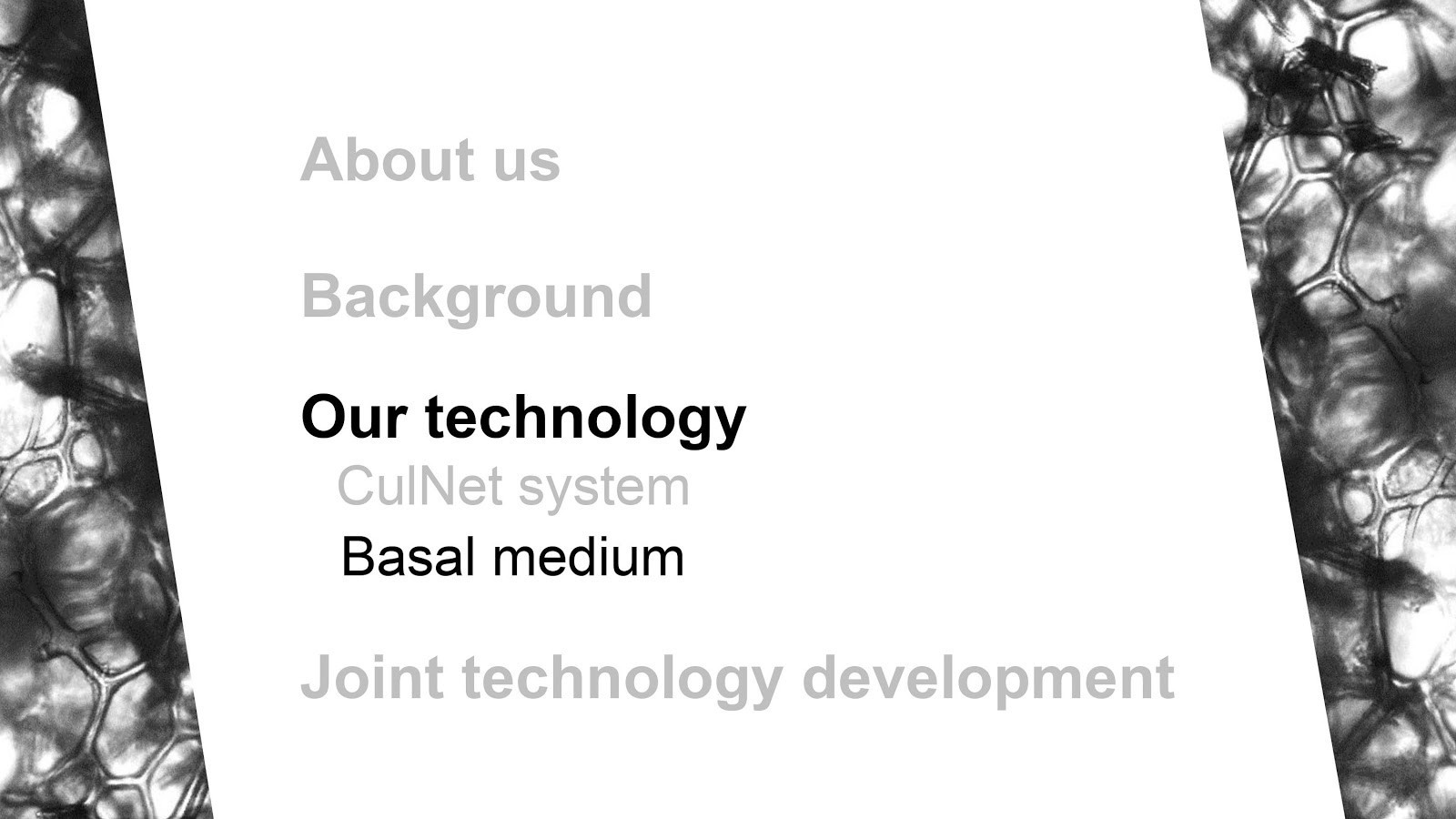
So, what about the basal medium?

Conventional basal medium has its own issues — many of its components are not approved for use in food.
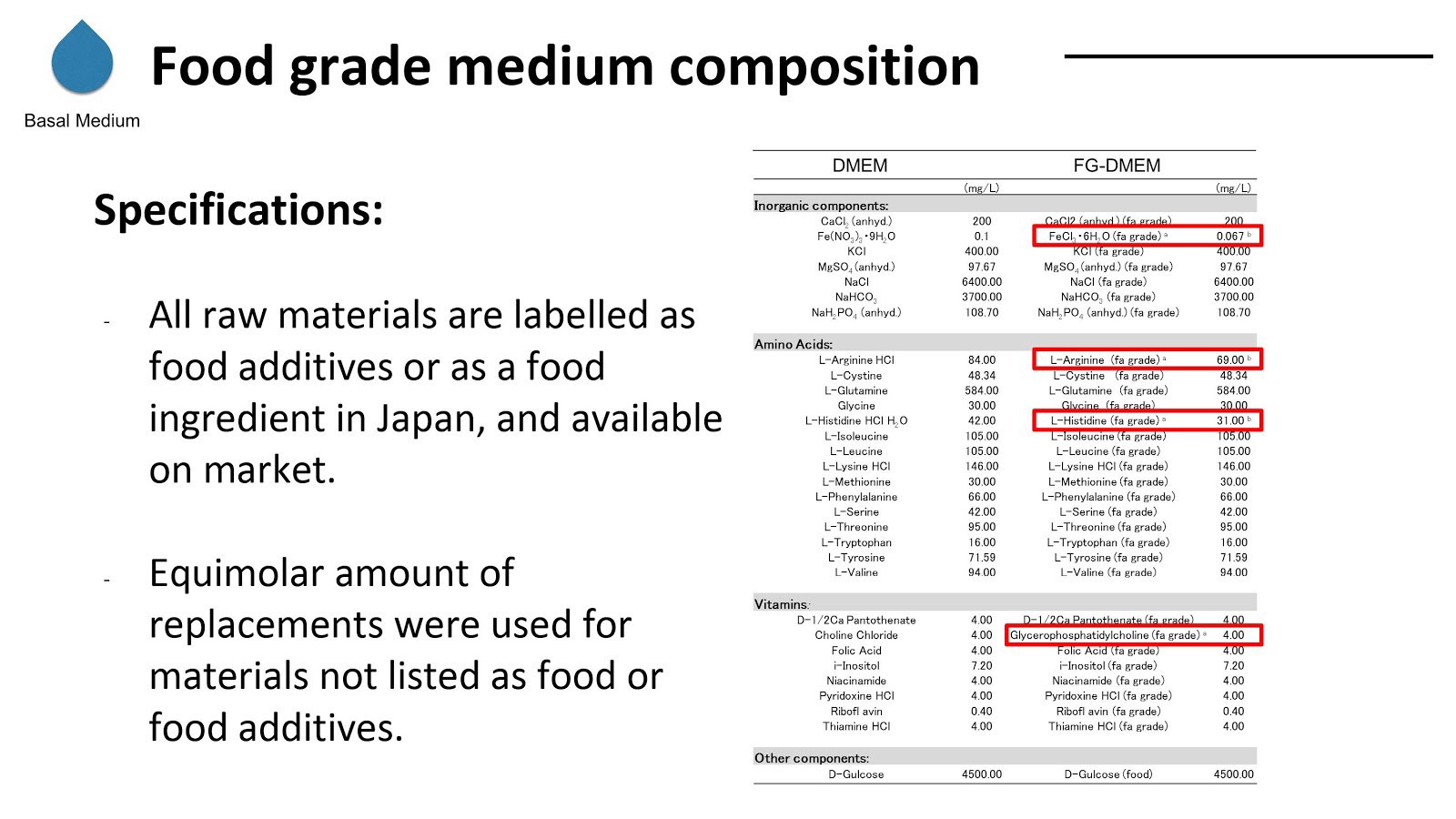
So, we replaced those ingredients with substances approved for food.
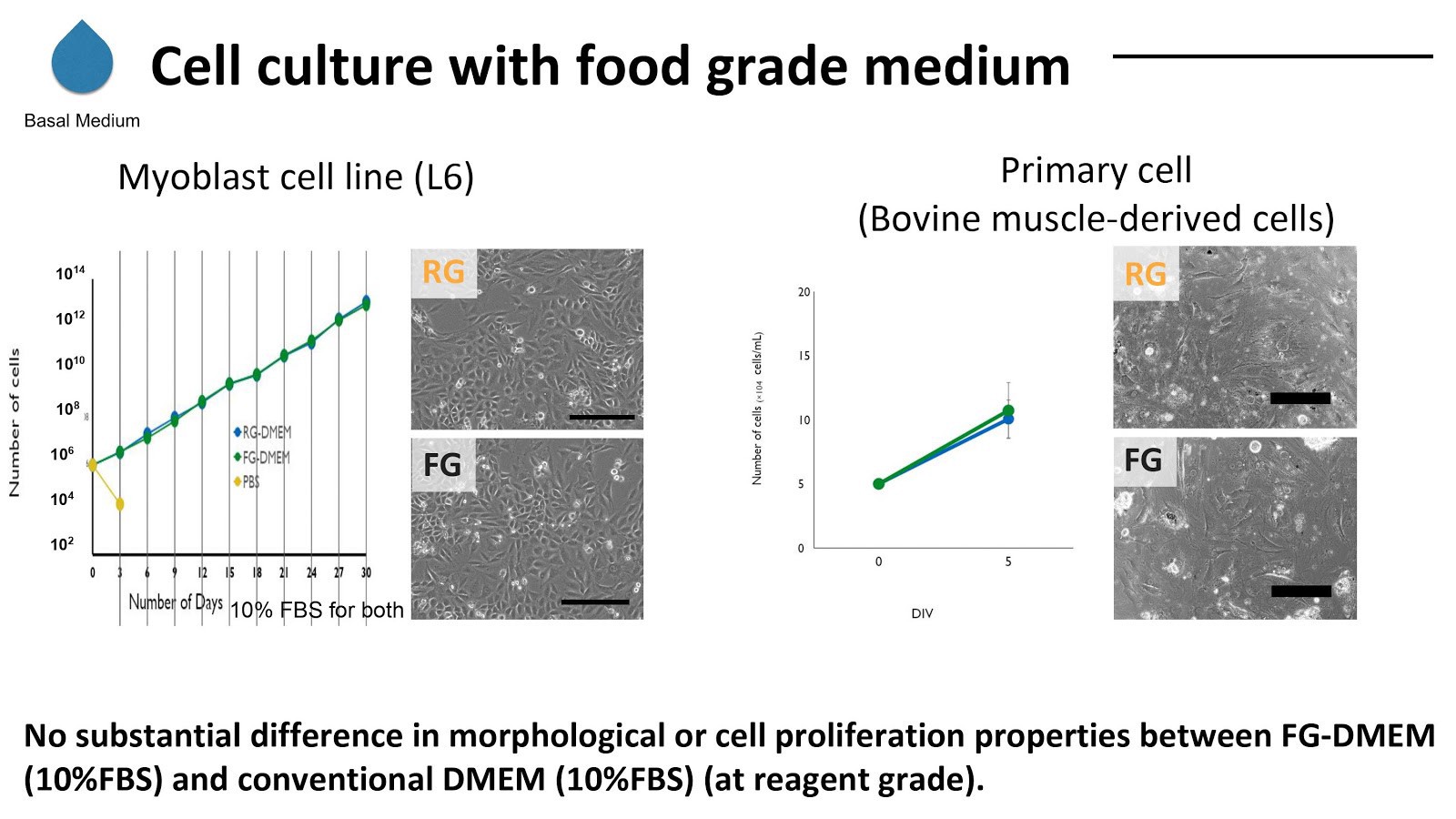
The above slide compares conventional culture medium (DMEM) with its food-grade version by cell culture efficacy. We see no adverse effects on cell culture.
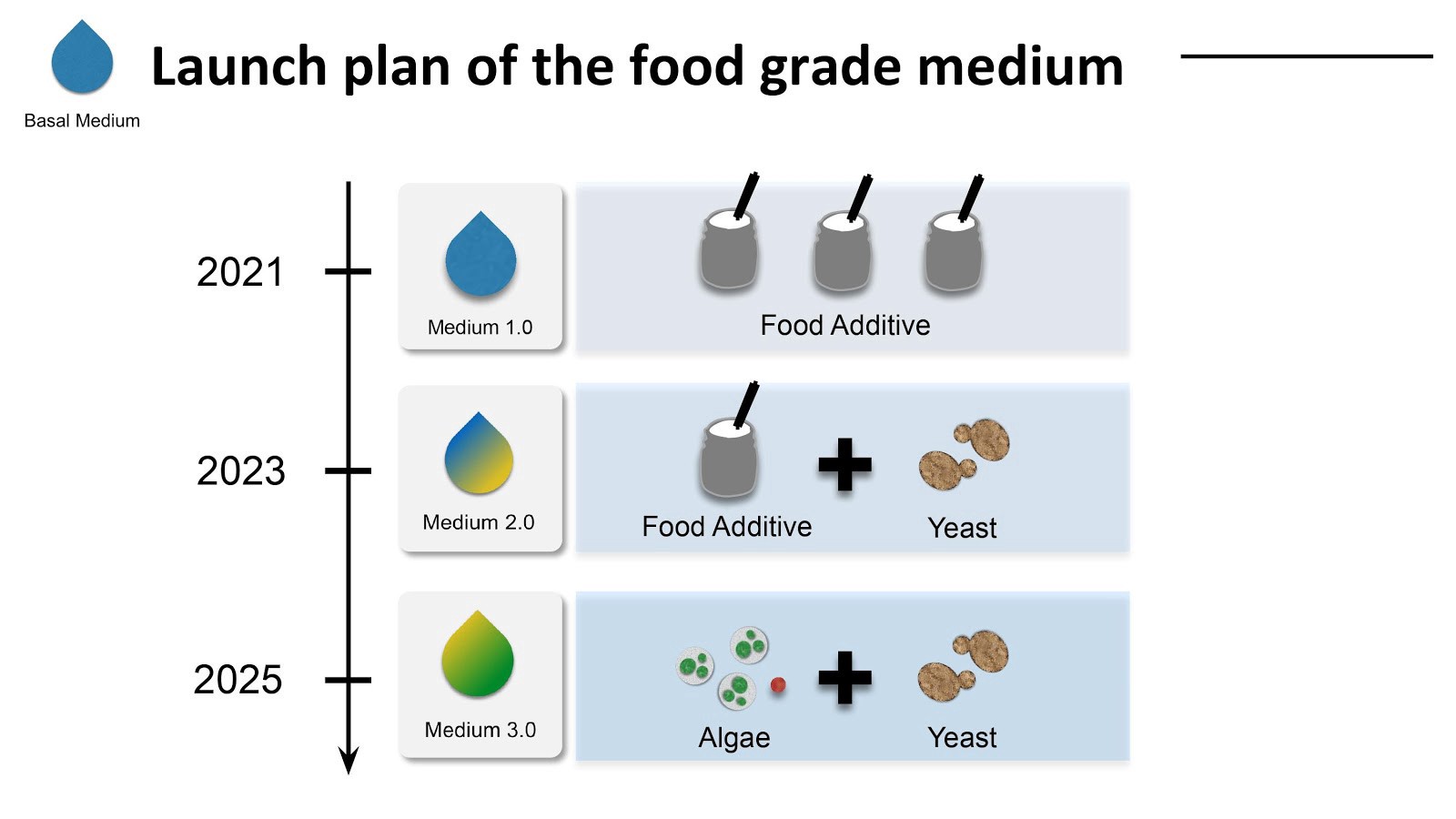
Here are the future prospects of basal medium development. We plan to launch food grade culture medium by 2021, replace some components with yeast extract by 2023, and by 2025, make the basal medium from processed algae and yeast extracts.
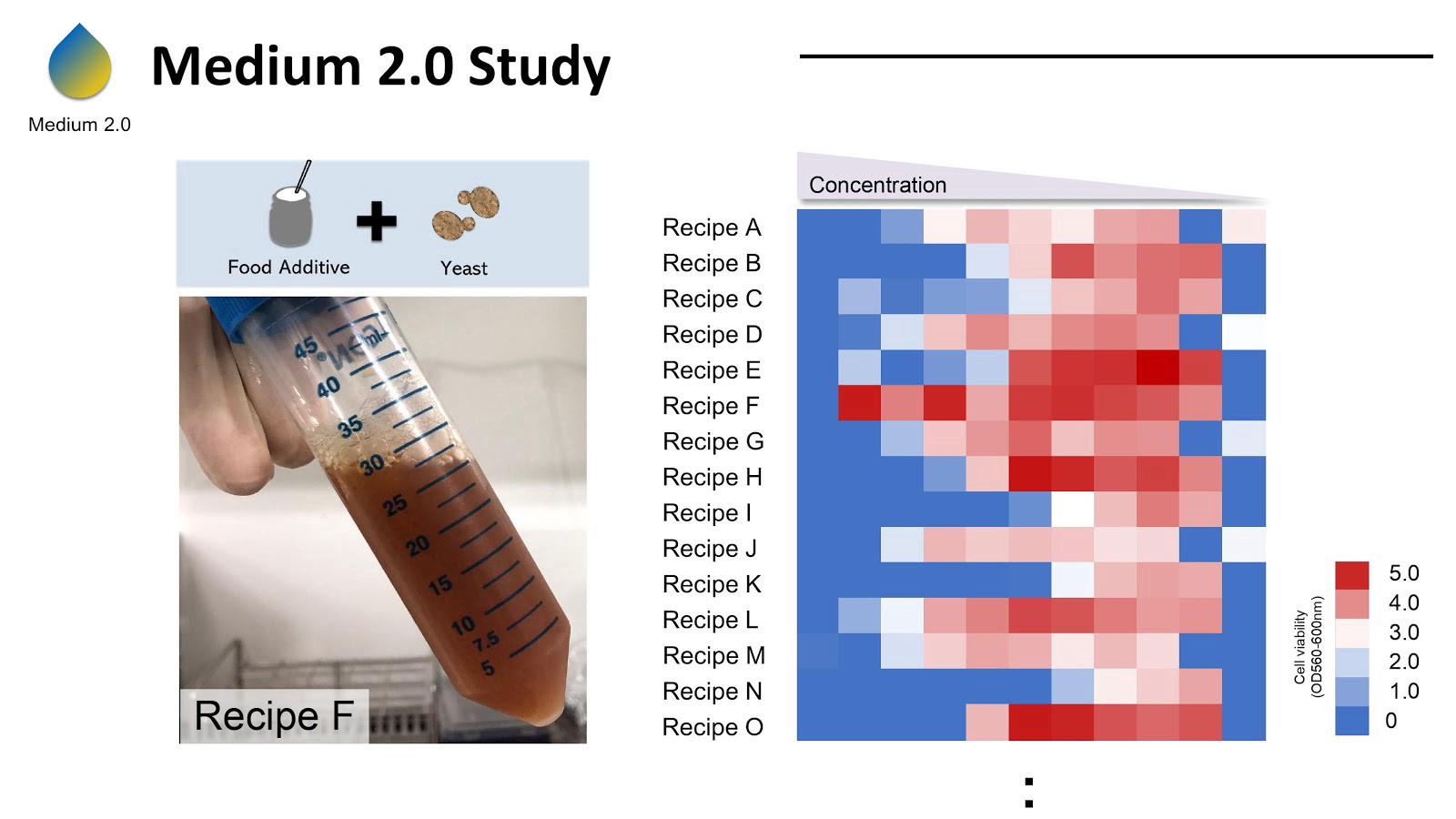
Above are the latest results of cell culture using yeast extract. Red means higher cell viability. Different yeast extracts show different cell responses, some being very positive.

Culture medium made from algae is developed in collaboration with JAXA, Japanese “NASA”, Tokyo Women’s Medical University, and Euglena, and algae jet fuel company.
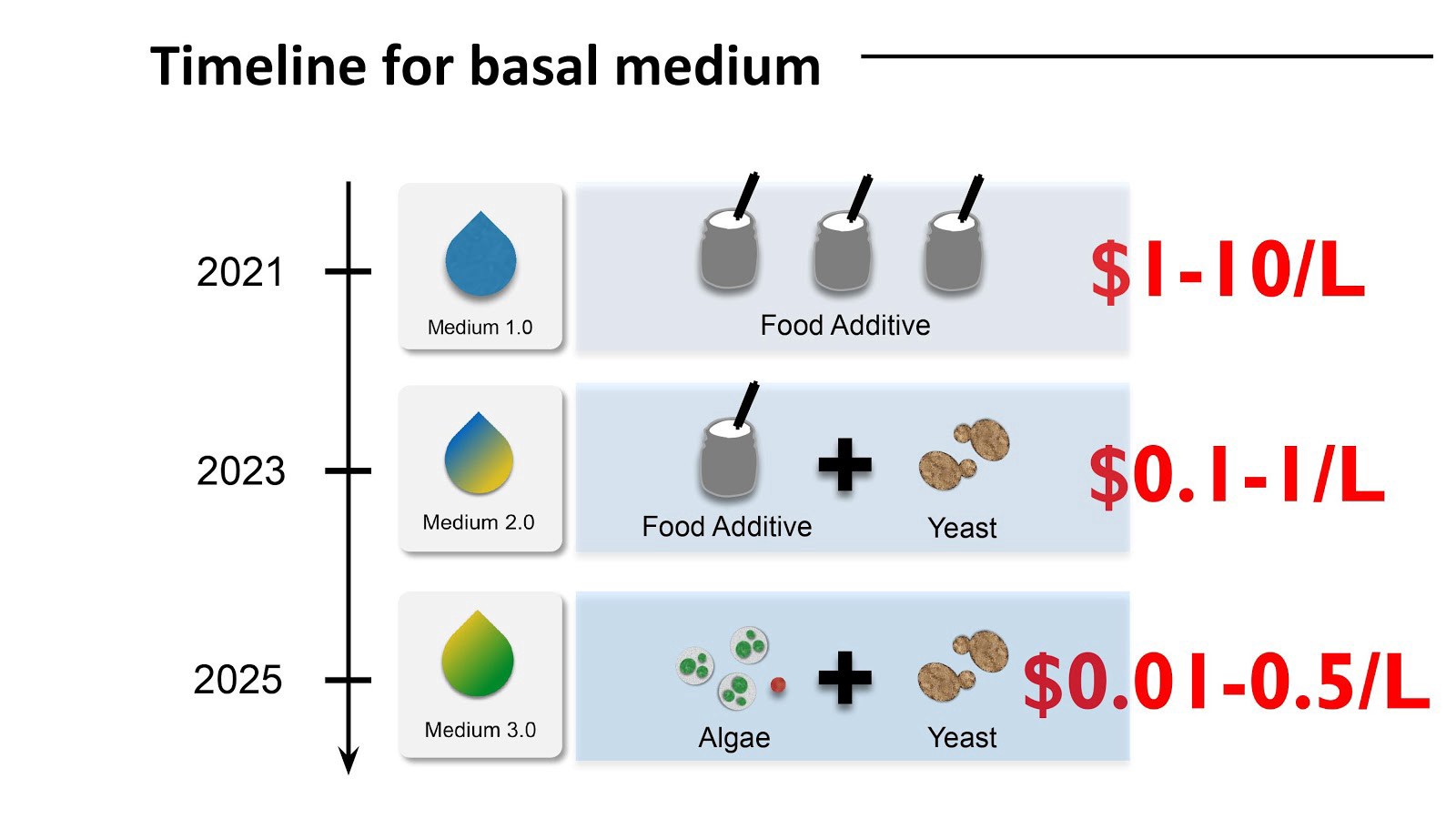
We estimate that yeast and algae bring down the cost of culture medium to $0.01~$0.5/L at the end.
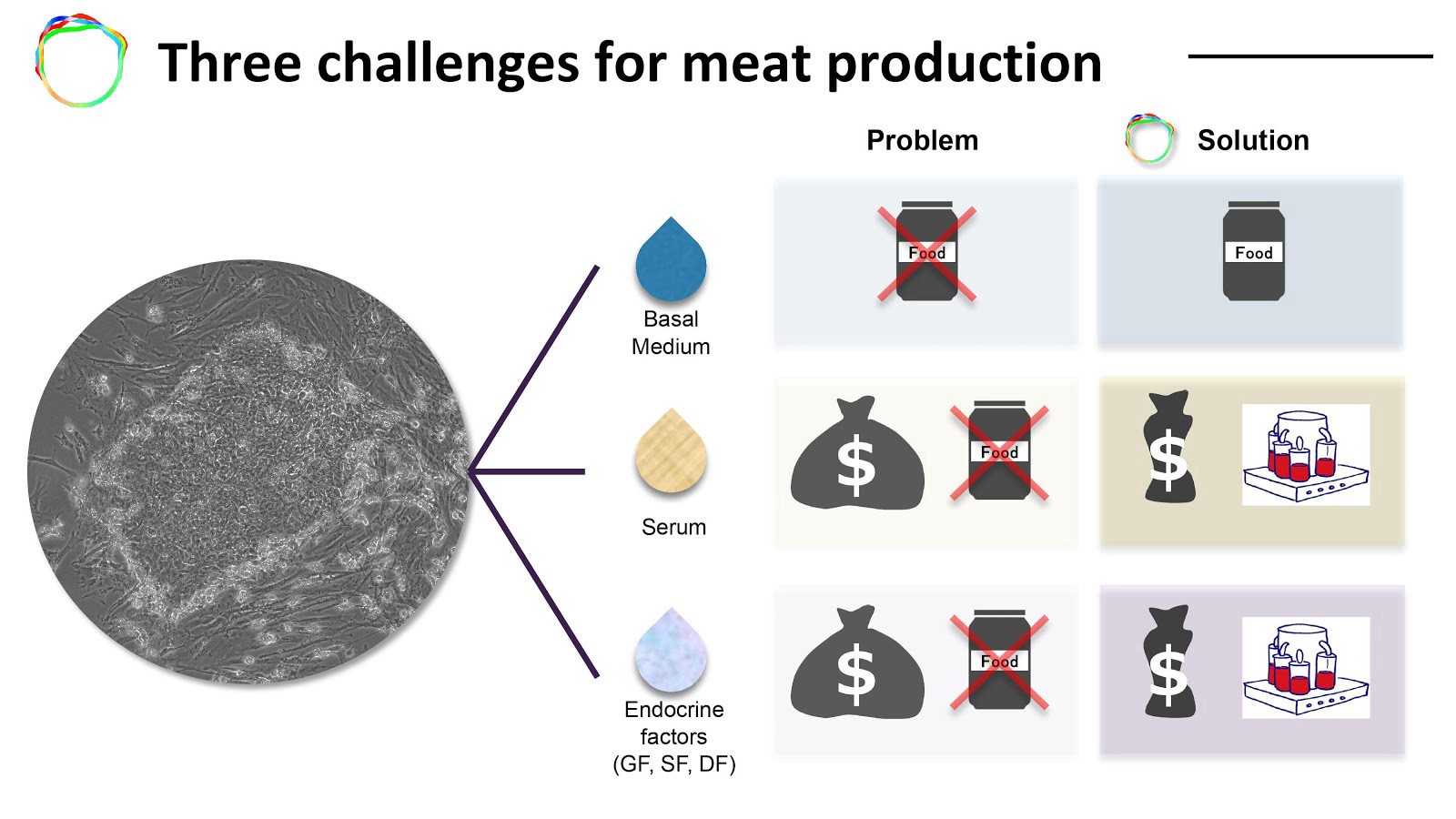
To summarize, we combine food grade basal medium and the CulNet System to solve the economic and regulatory issues of cell culture and cellular agriculture products.
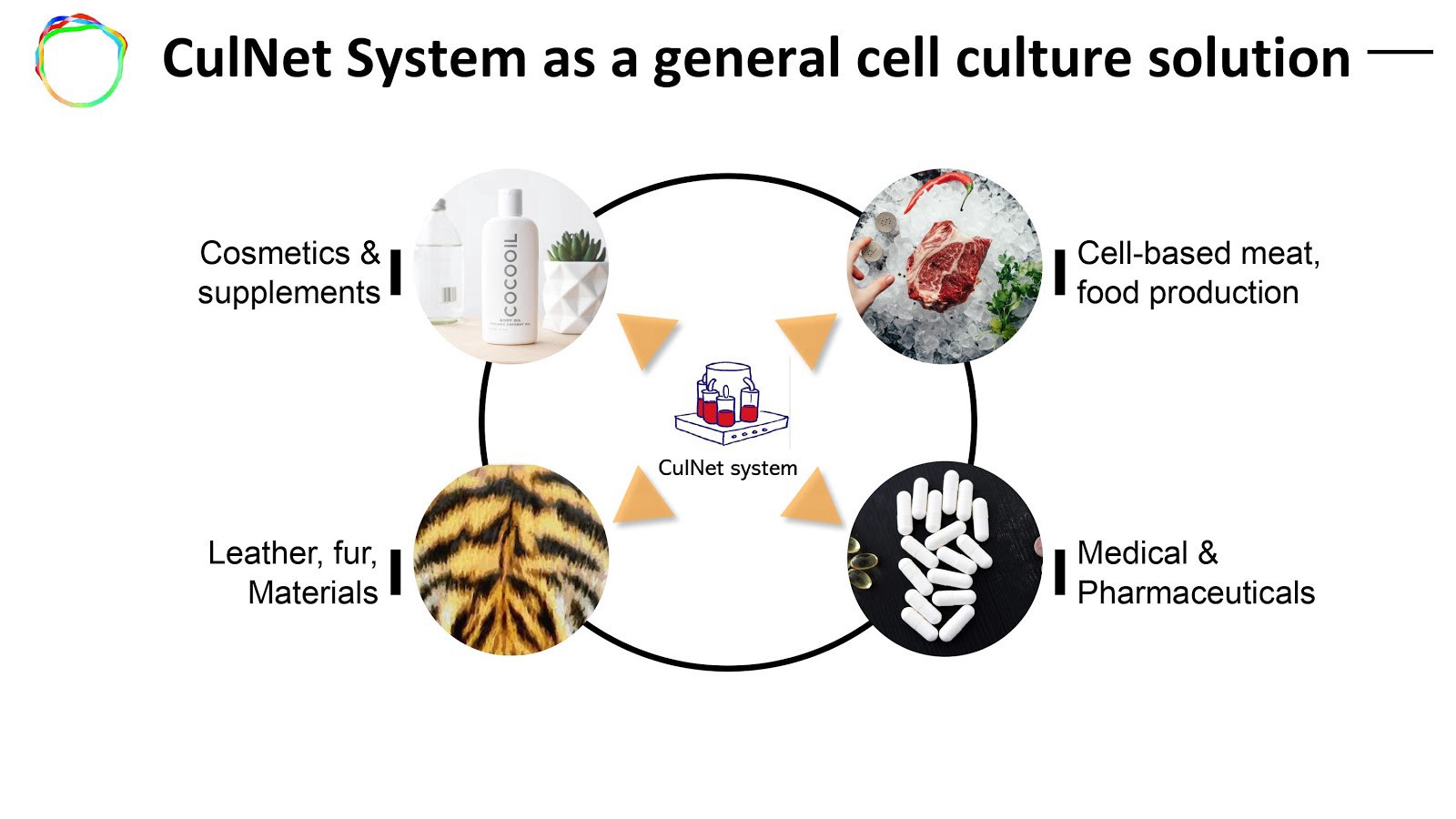
The CulNet System can in theory make anything made from animal cells. It could be cosmetics ingredients, cell-based meat, fur, or could be something in medical and pharmaceutical applications like “body-on-chip.”

I think most of the audience seeing this is involved in cell-based meat or cellular agriculture. Here, we are offering our technology for your purpose, to develop your product. It can handle any cells of any animal species.
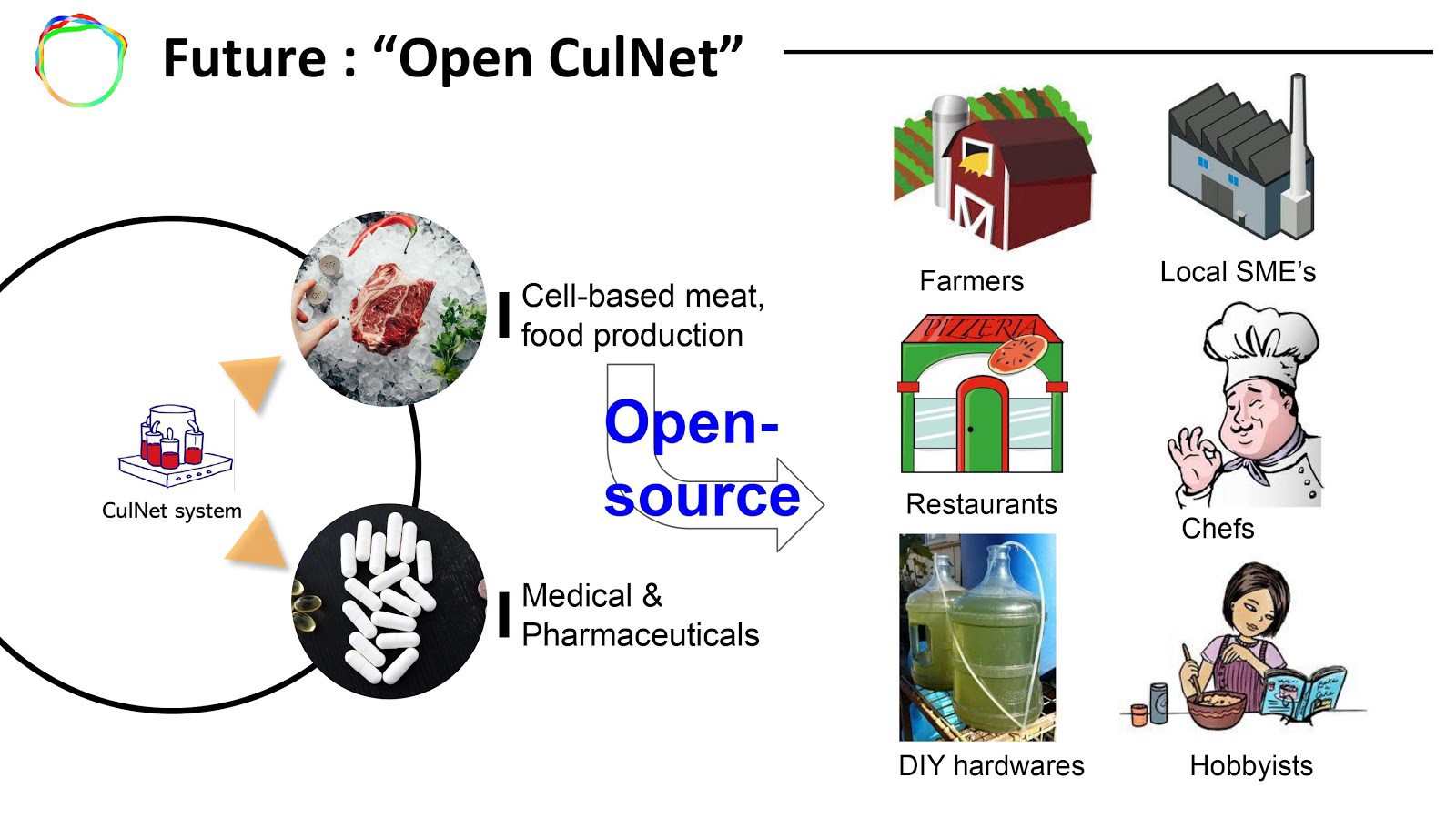
We are building a biofabrication platform with the CulNet System and making this accessible to farmers, hobbyists and DIY bio people, so that people can culture and grow things they imagine.
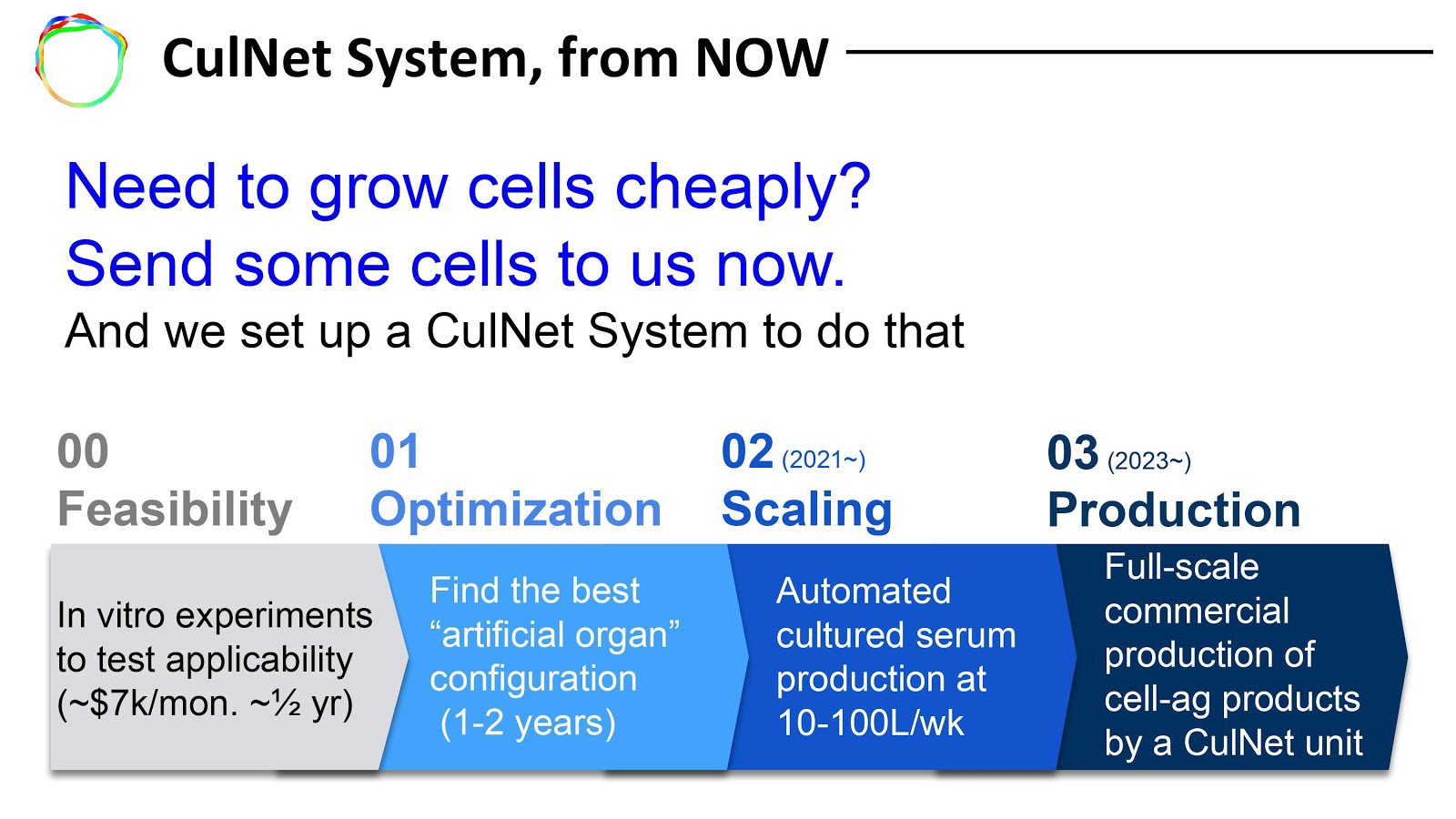
Here is a summary of our offer. Step zero is the feasibility study that lasts for half year. If fruitful, you could set progress timelines and checkpoints like Step 01, 02 and 03, toward the point where you set up a cell-based meat production facility at your site.
https://integriculture.jp/news/337/?locale=en
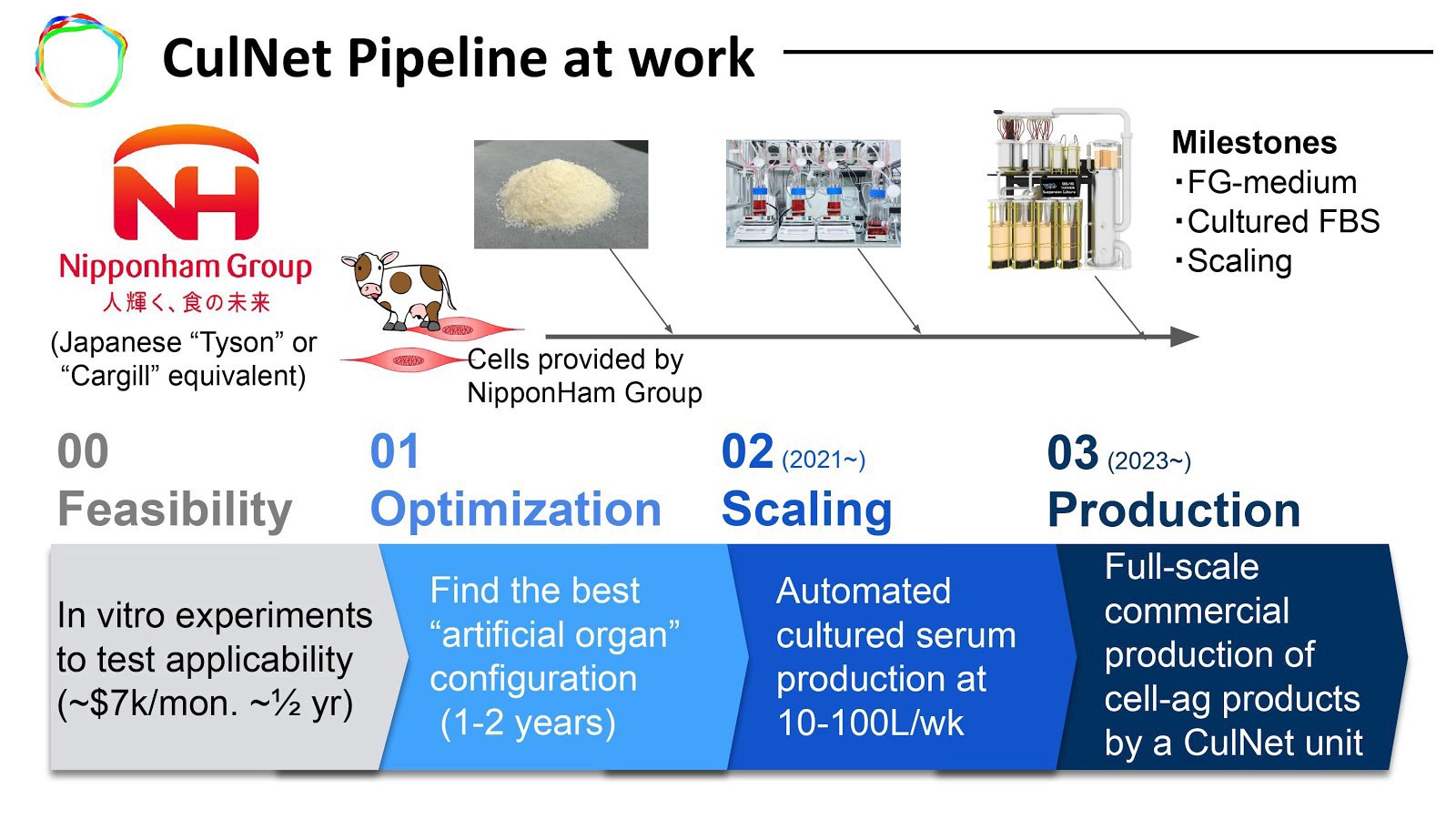
Several companies actually, are already on this pipeline, most notably NipponHam, the Japanese equivalent of Tyson and Cargill. In the future, we may see a big CulNet System operating inside NipponHam’s facility.
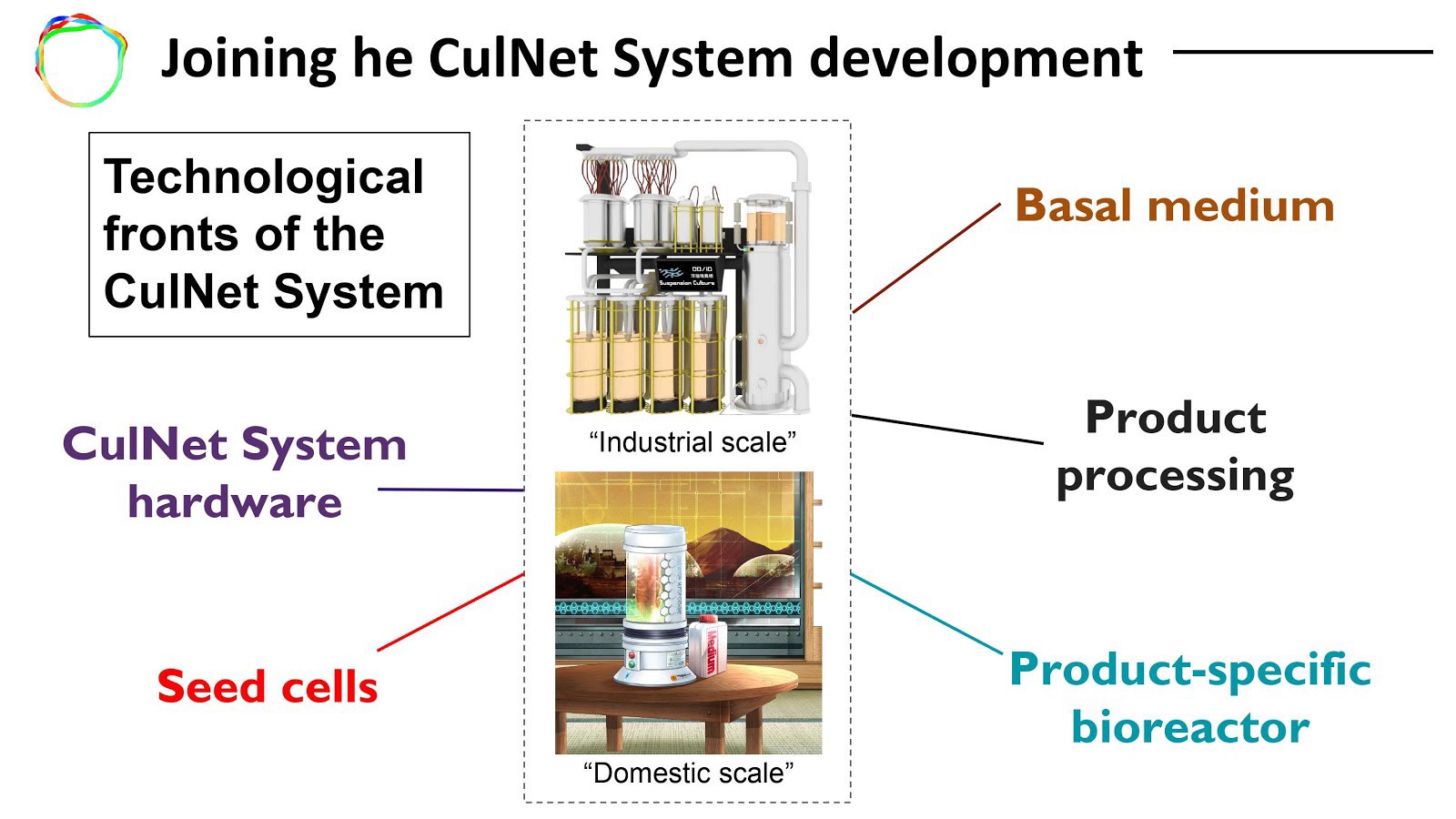
We have been collaborating with other companies to develop CulNet System. Collaborators include bioreactor manufacturer, food additives company, farmer that does seed cells and beer company that does yeast-based culture medium., Recently, we have organized these collaborations into a unified scheme called “CulNet Consortium.” If you are interested in taking part of this endeavor to build a cellular agriculture infrastructure, please don’t hesitate to contact us.
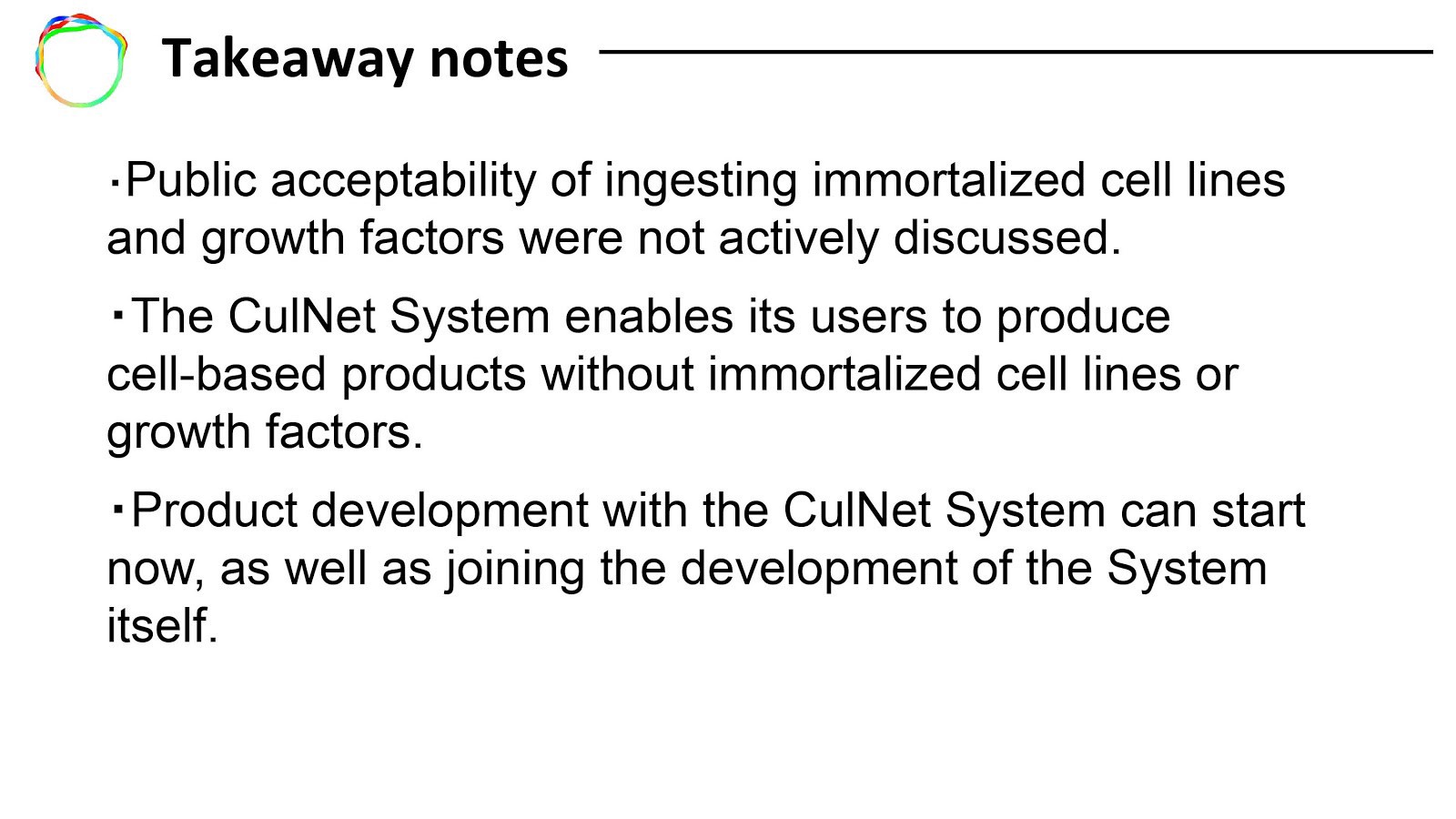
Here are our takeaway notes from this presentation. Thank you for listening.
Originally published by ShojinMeat Project at https://medium.com on May 11, 2020.

